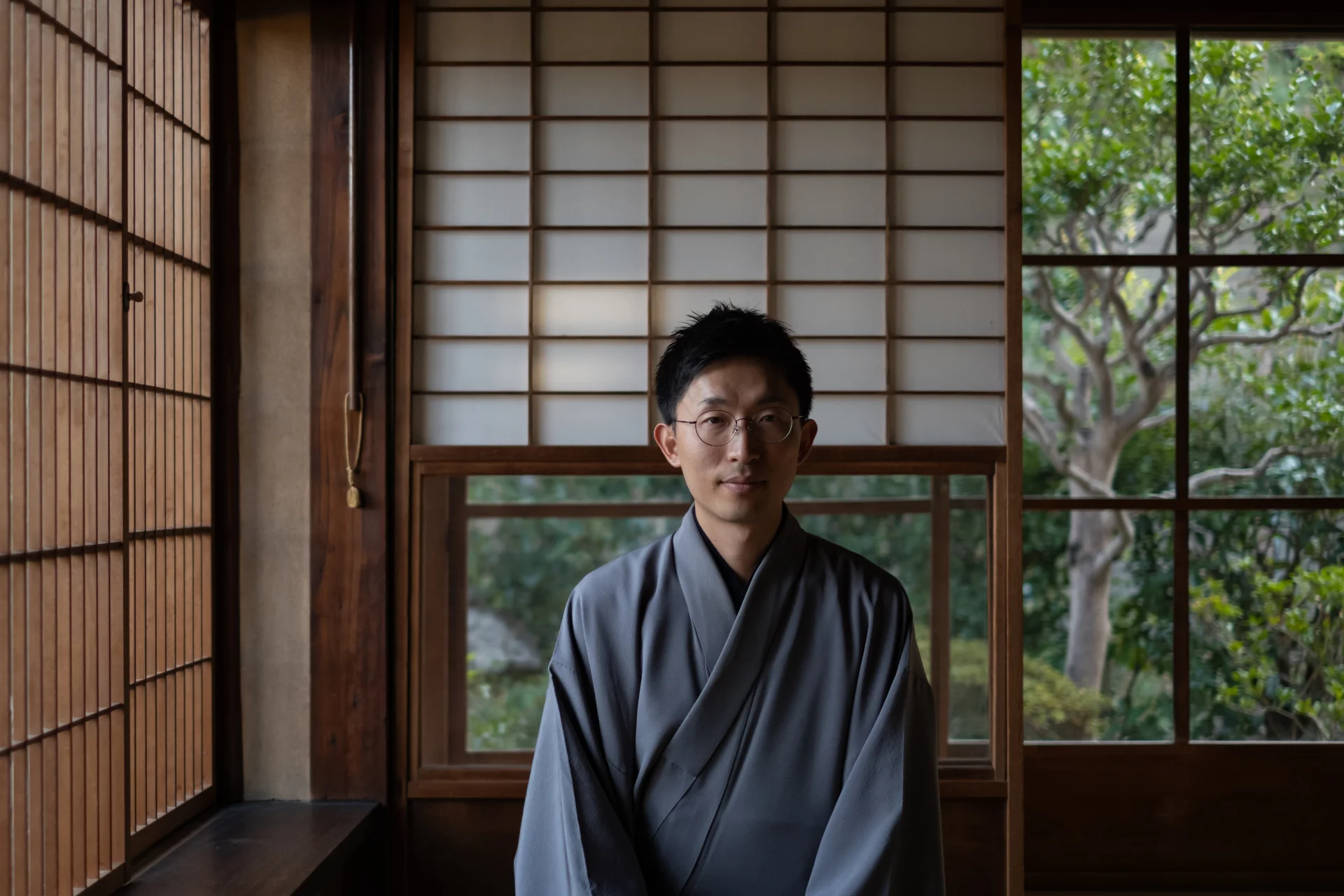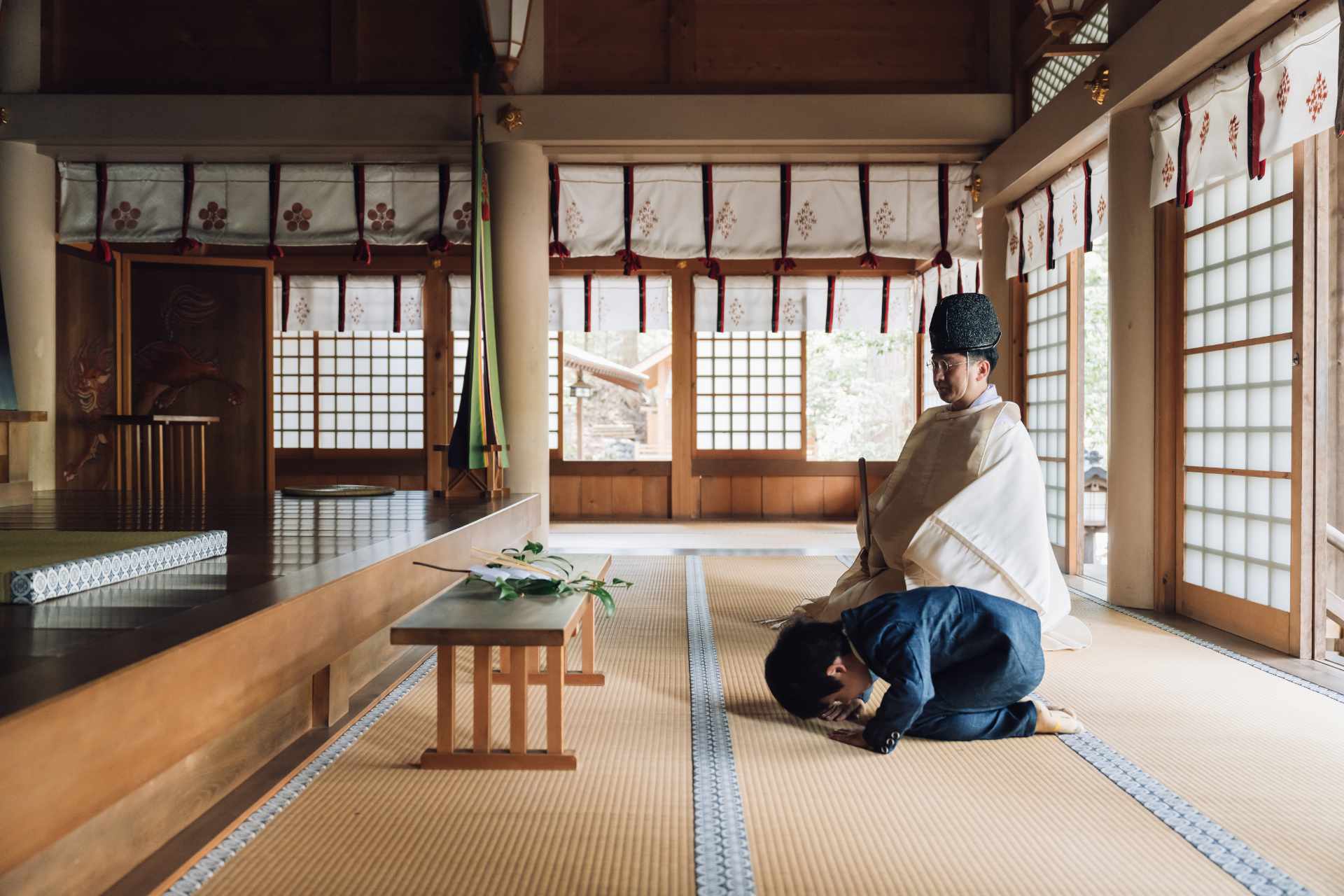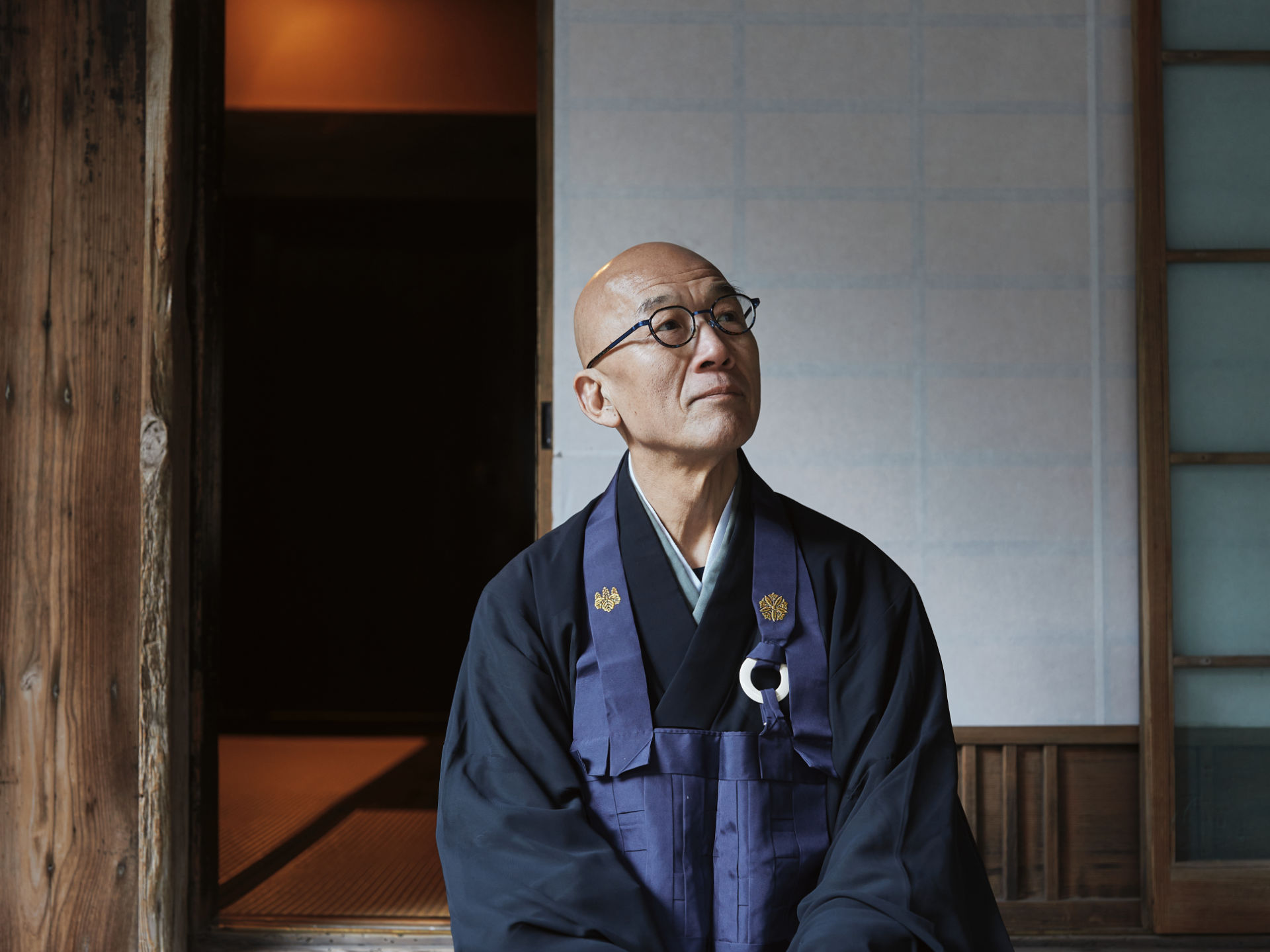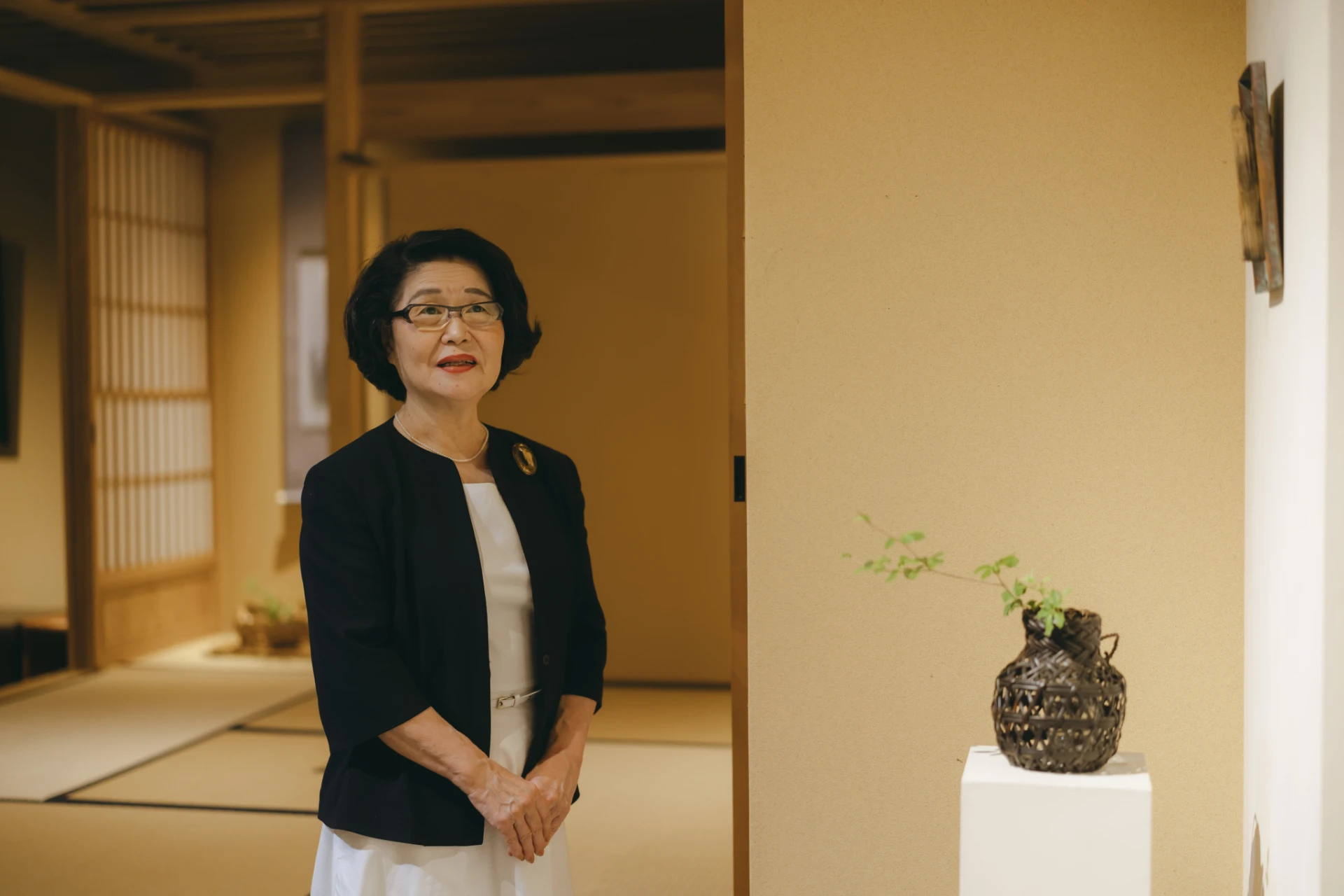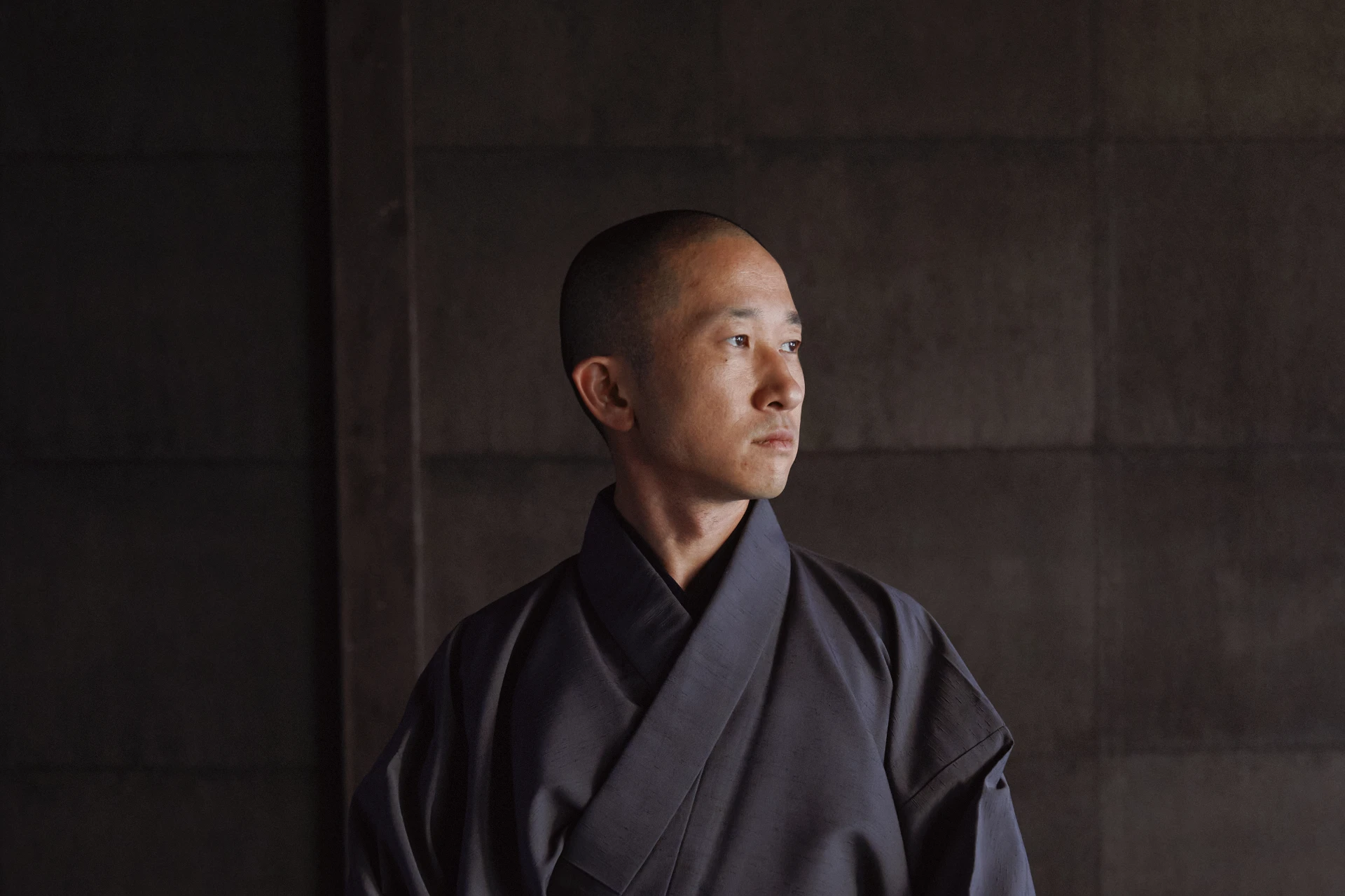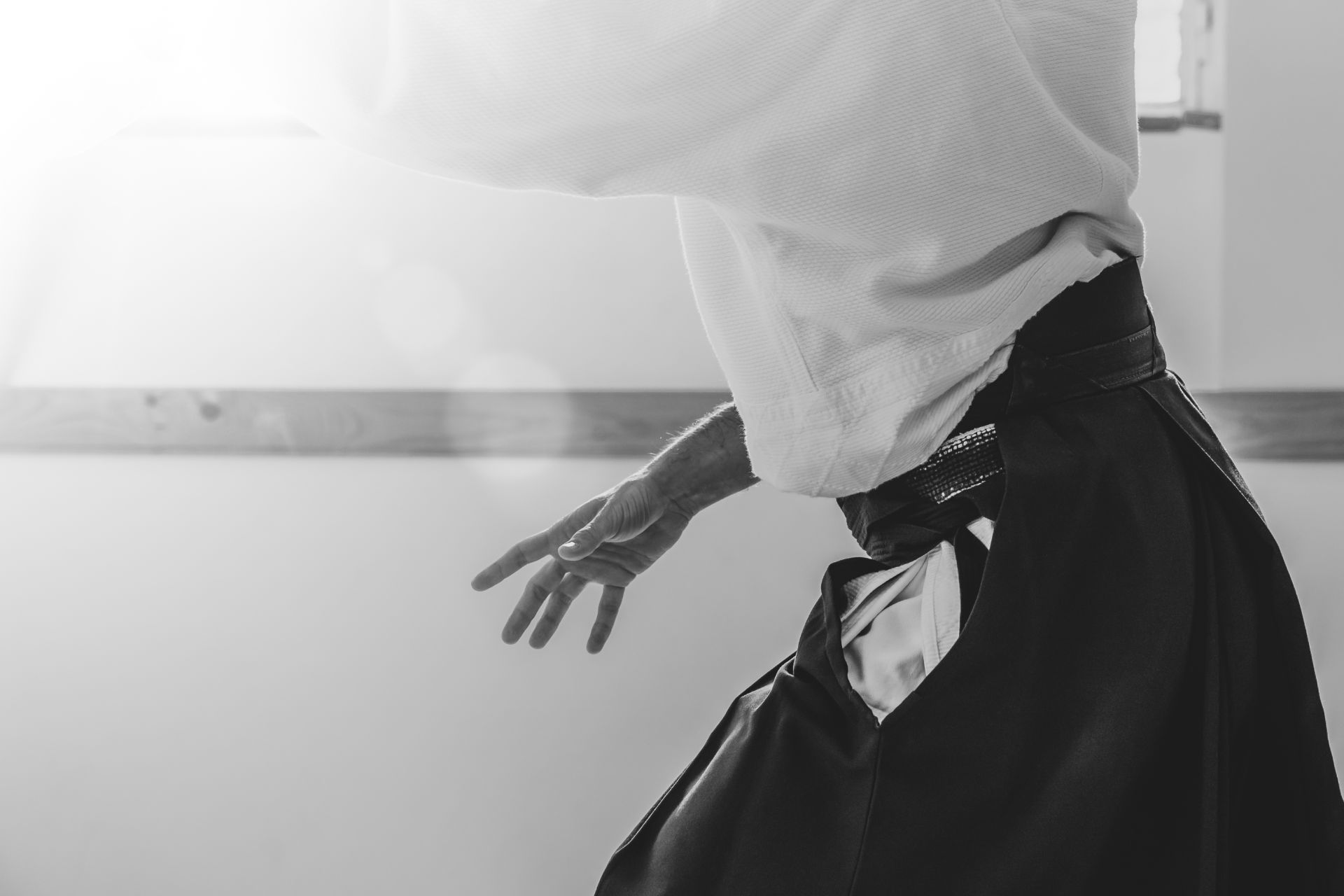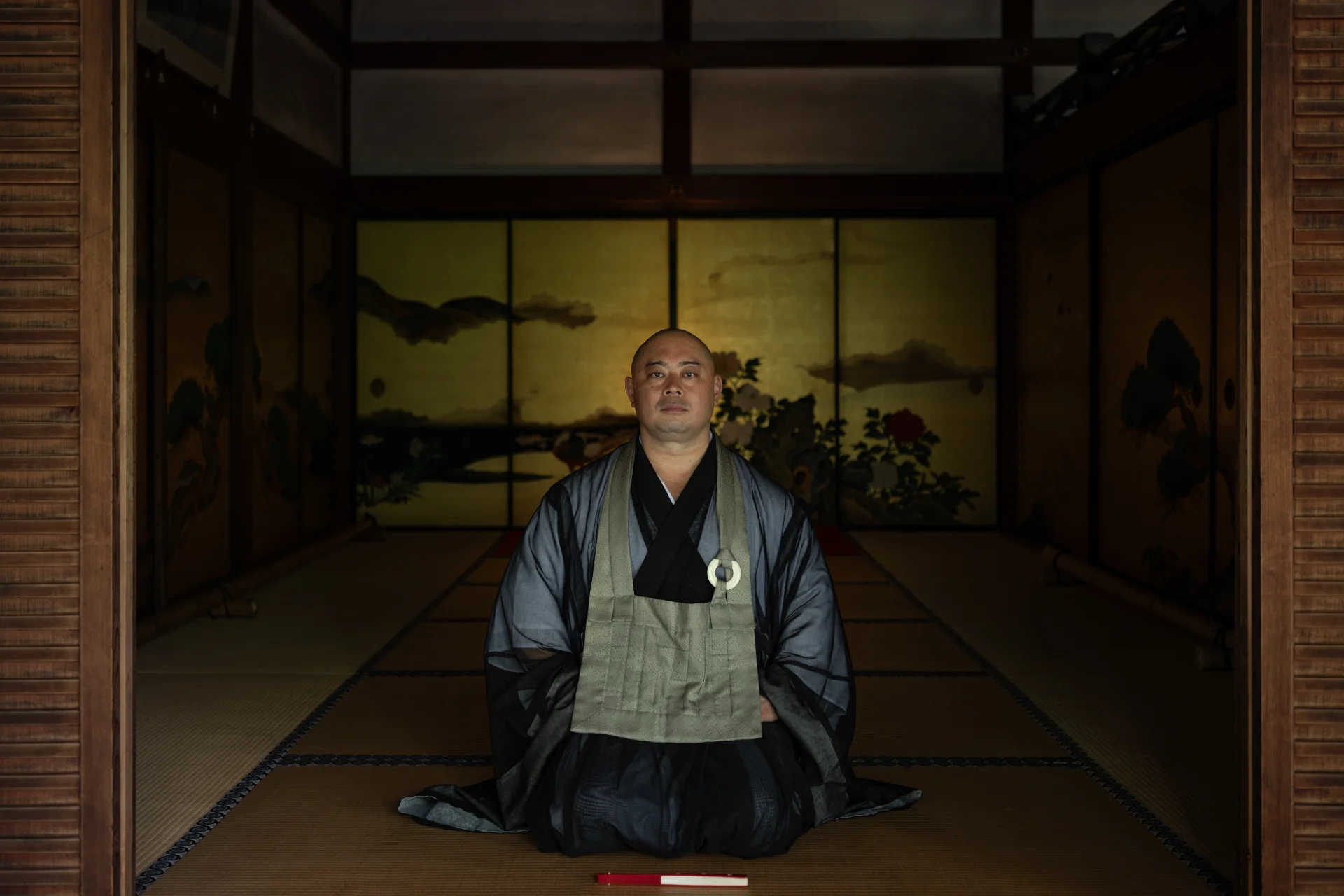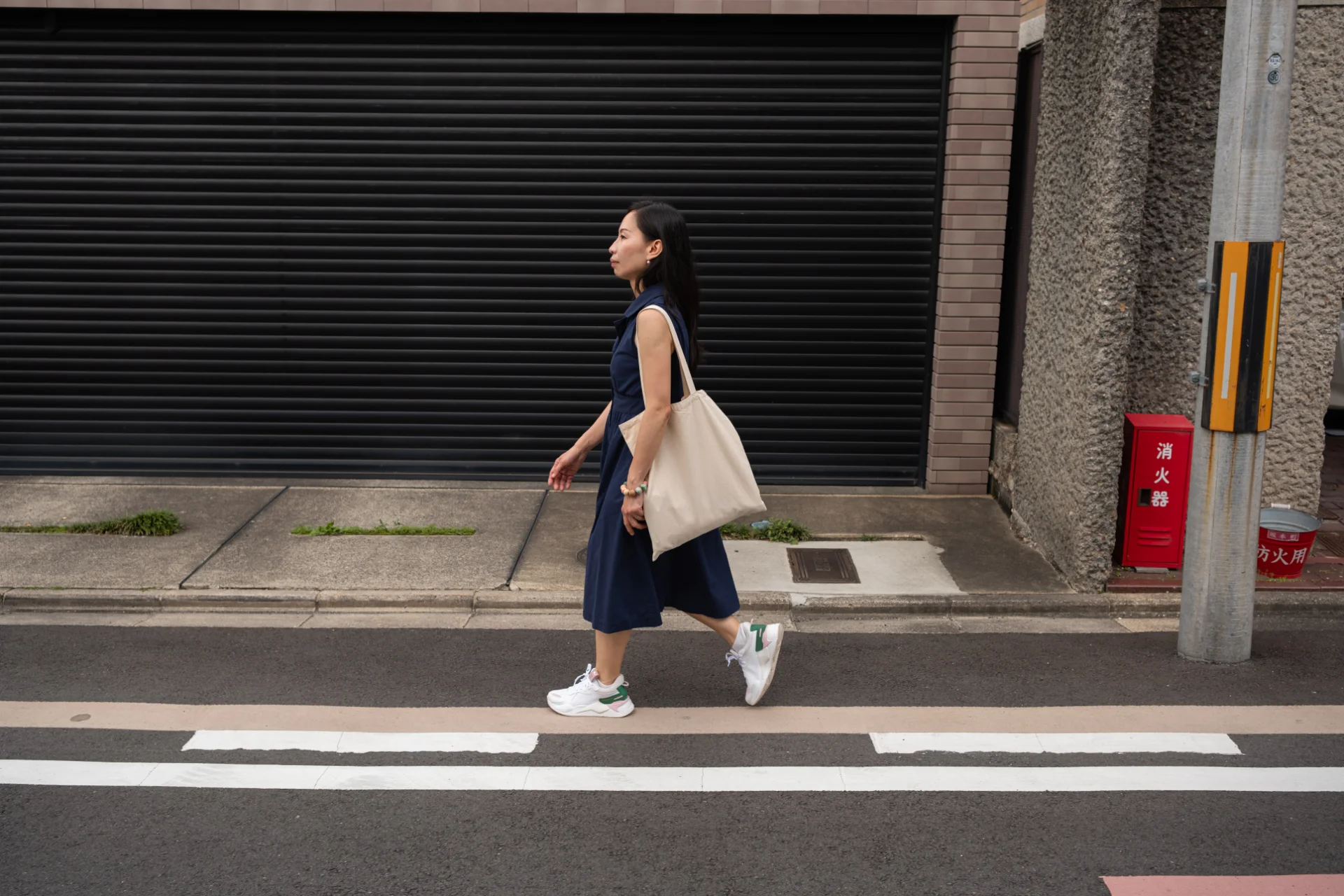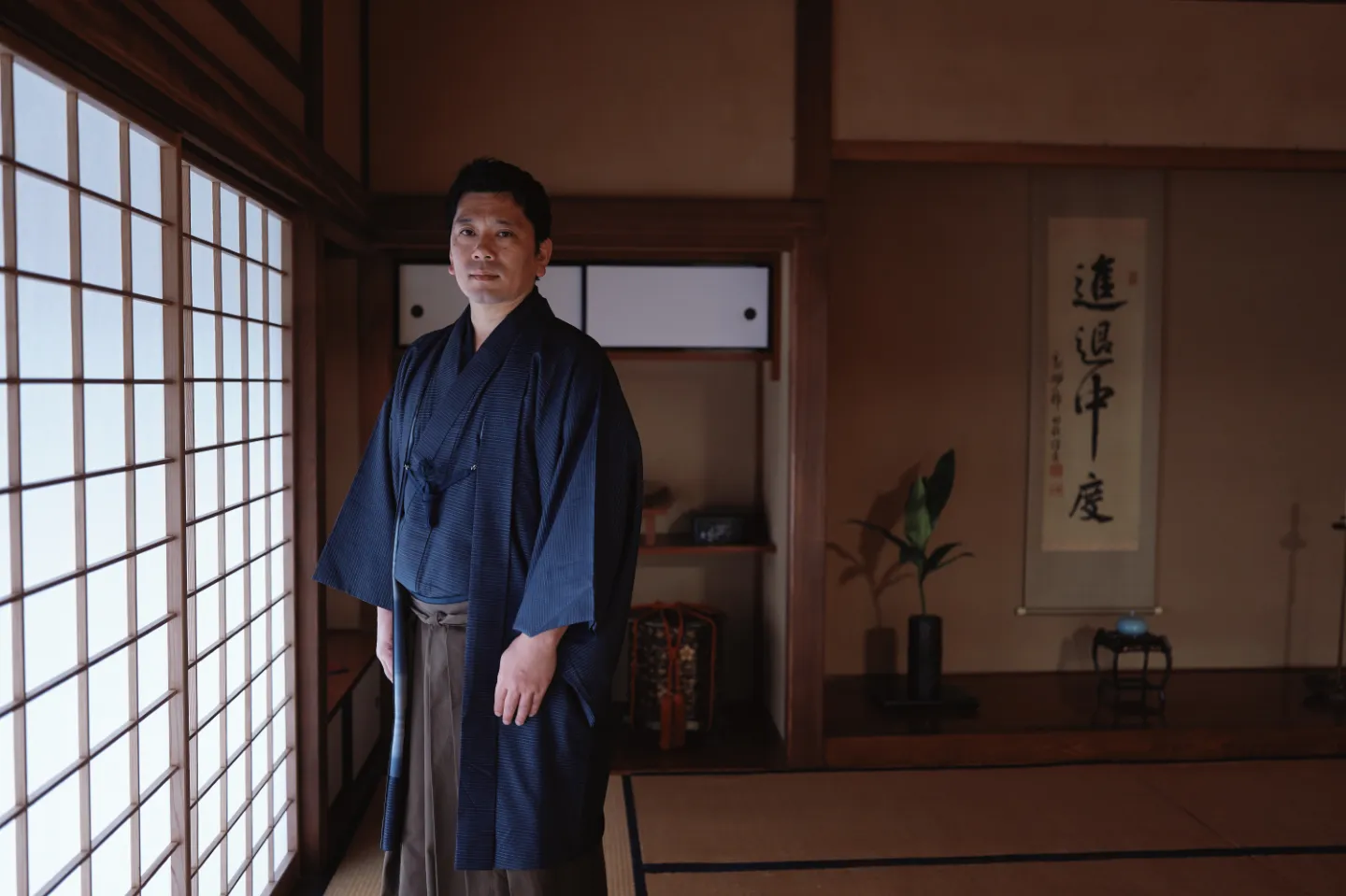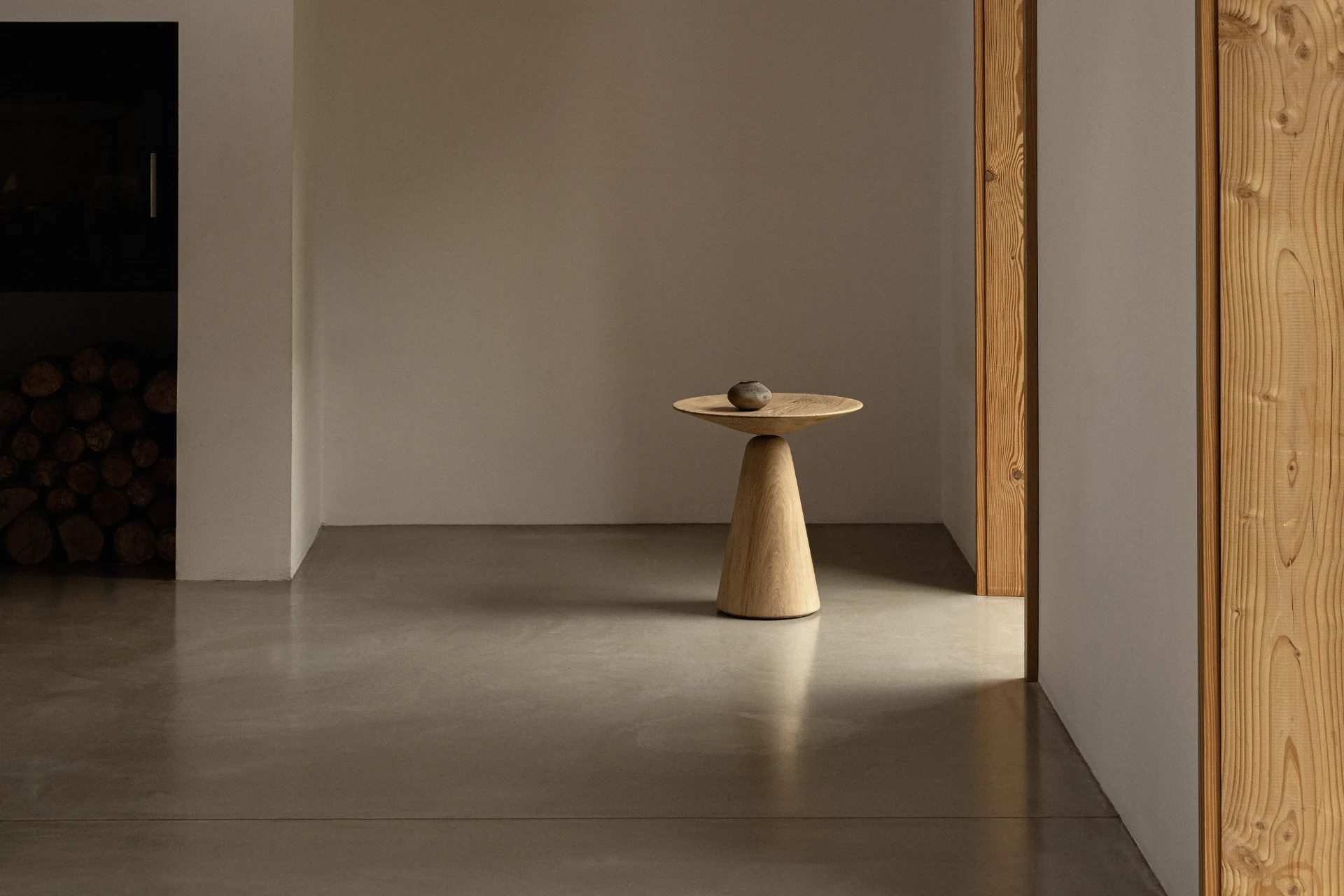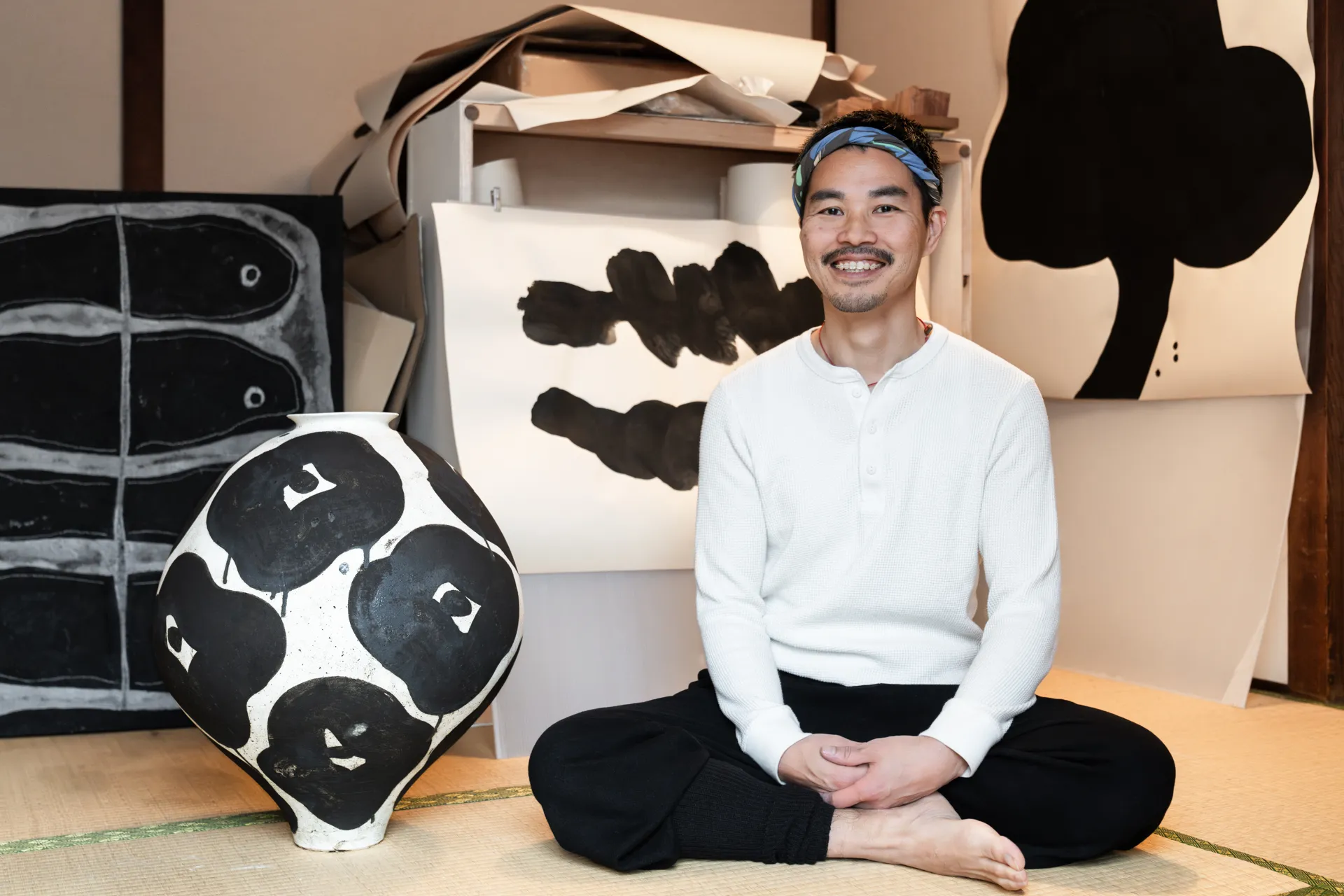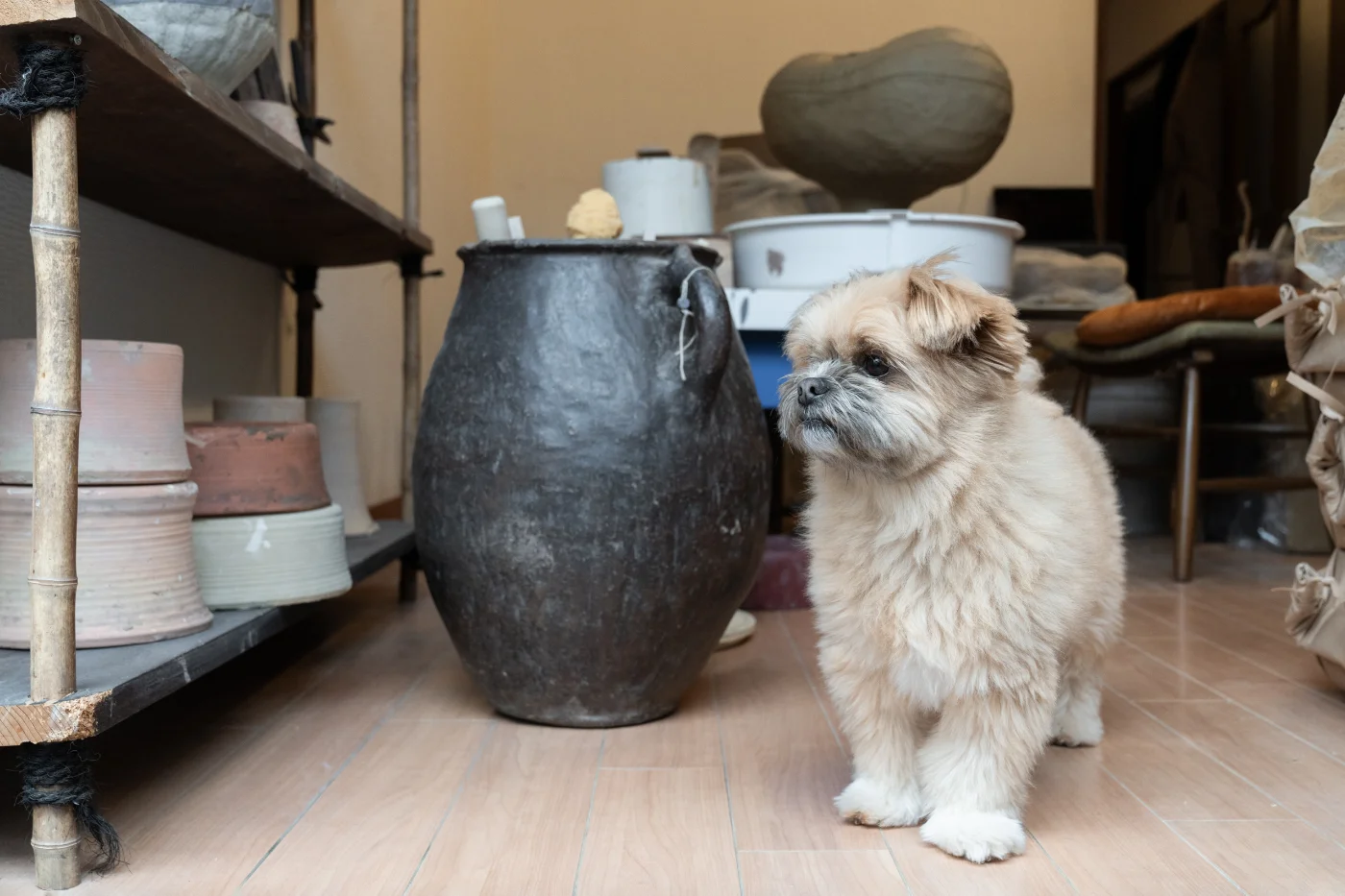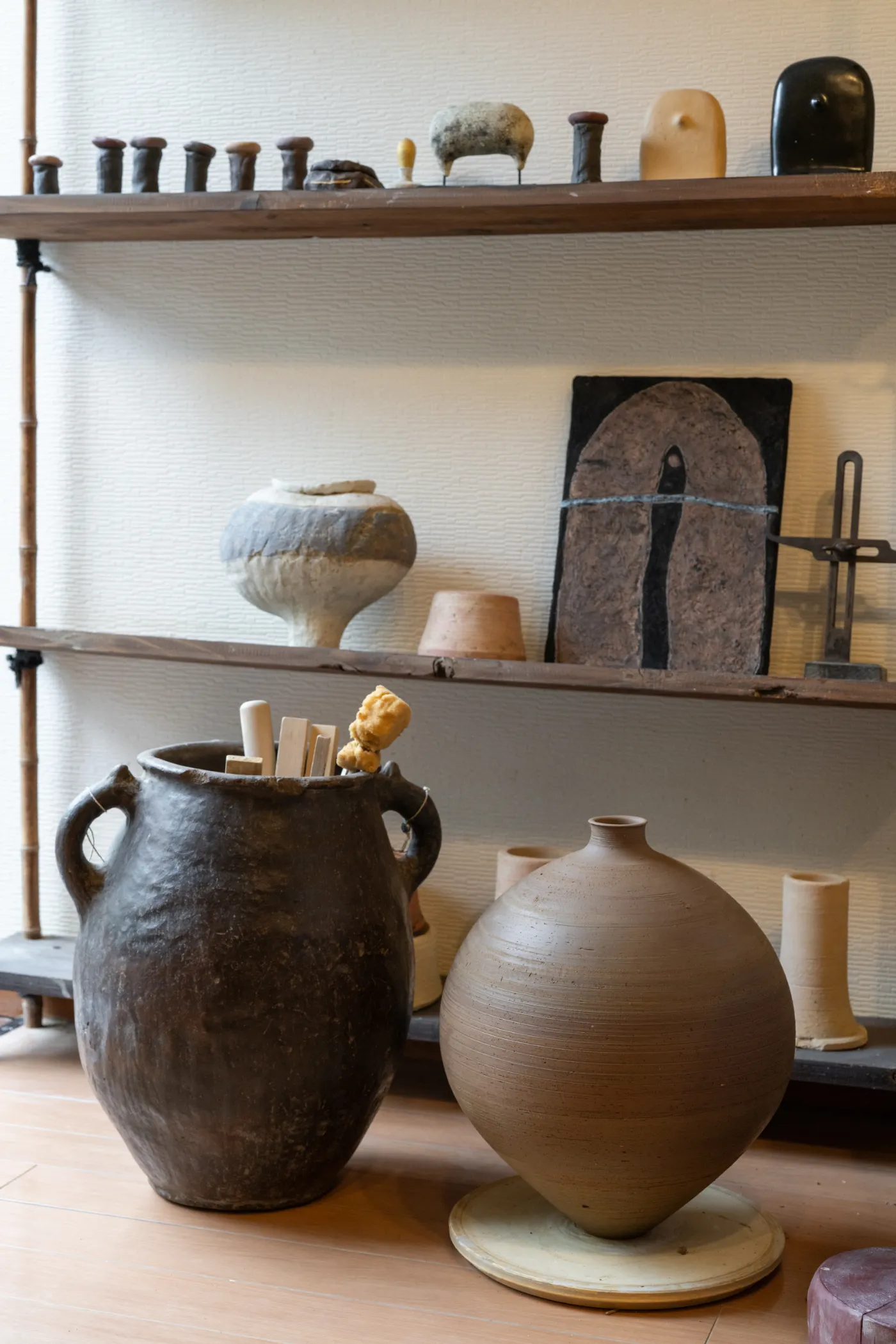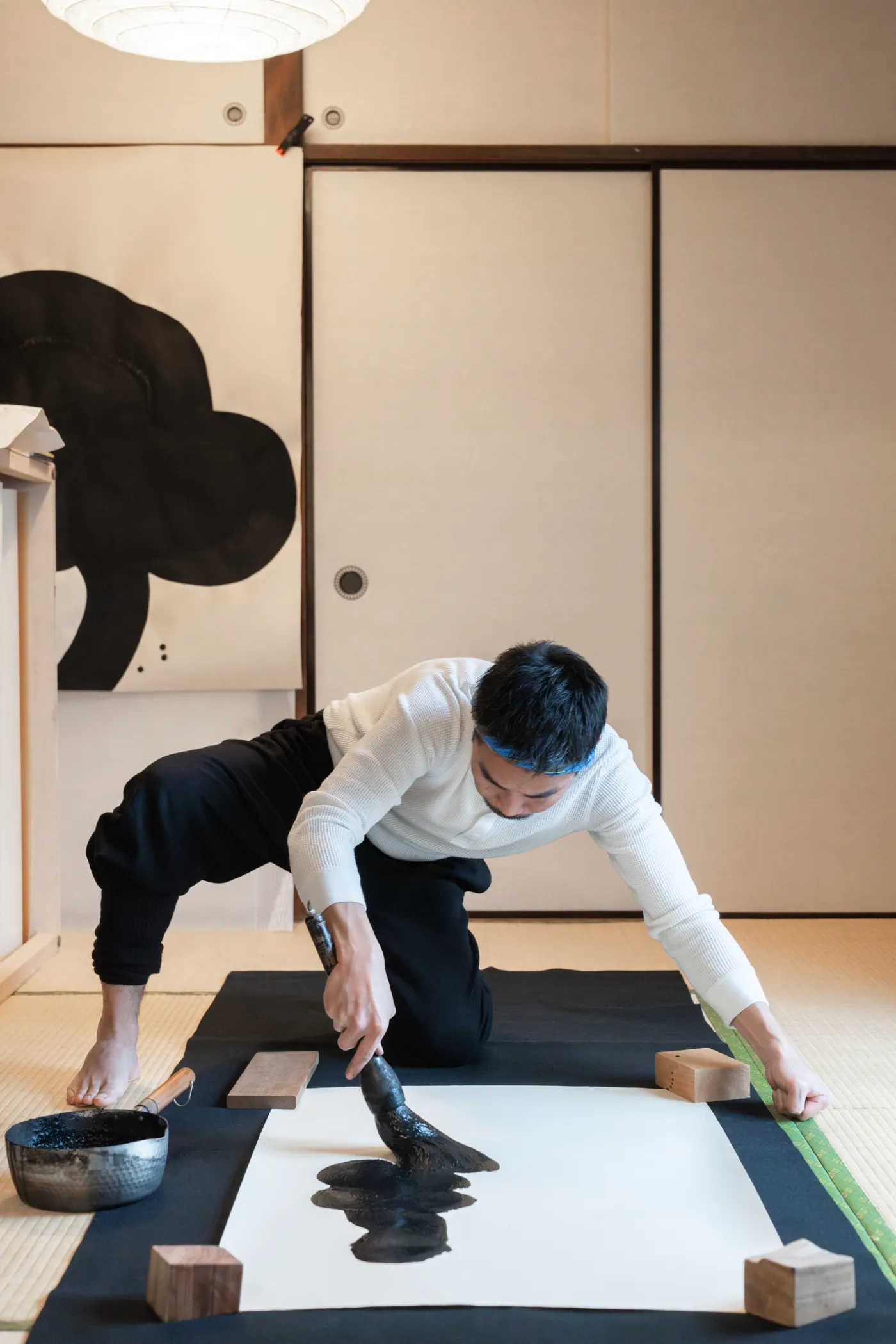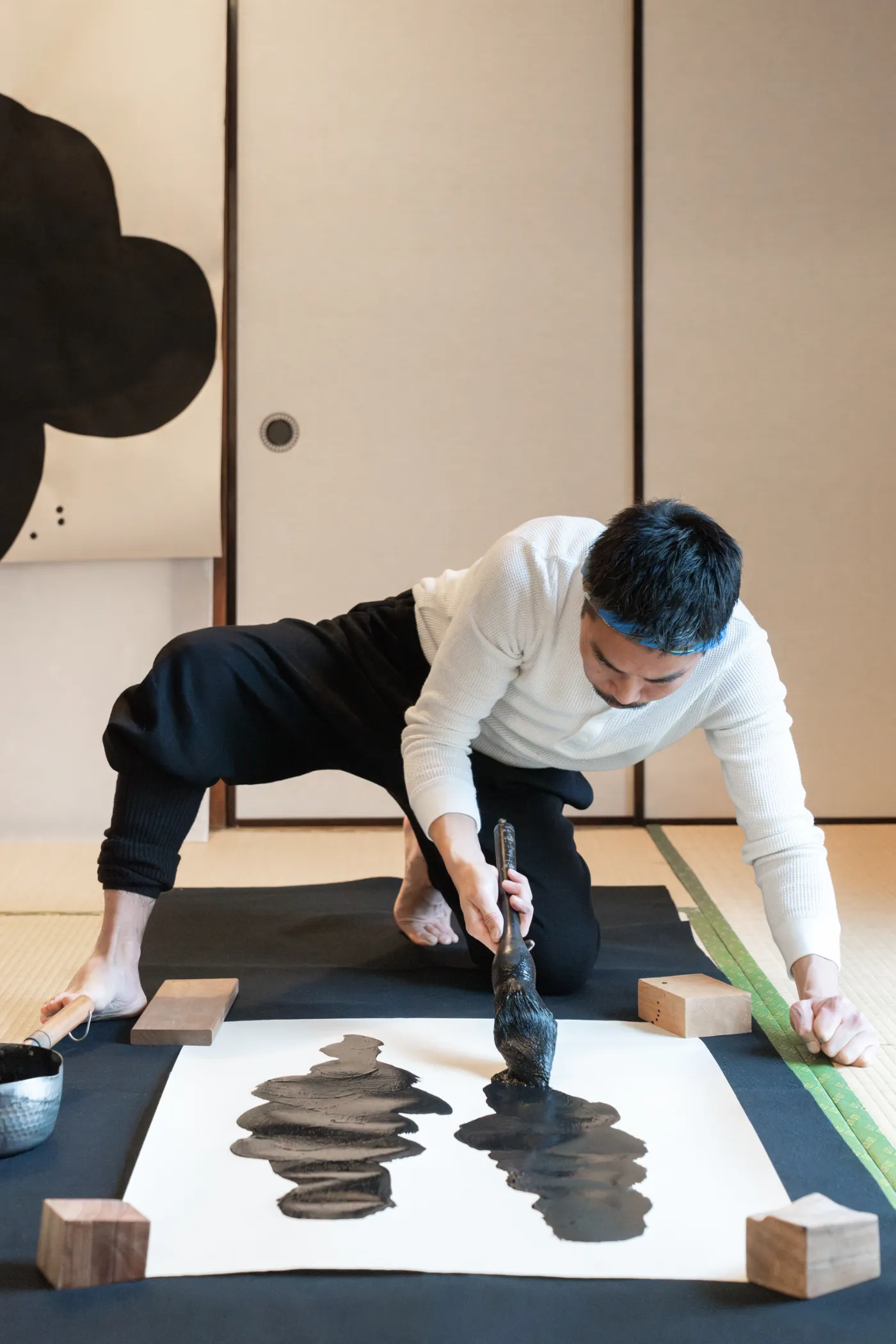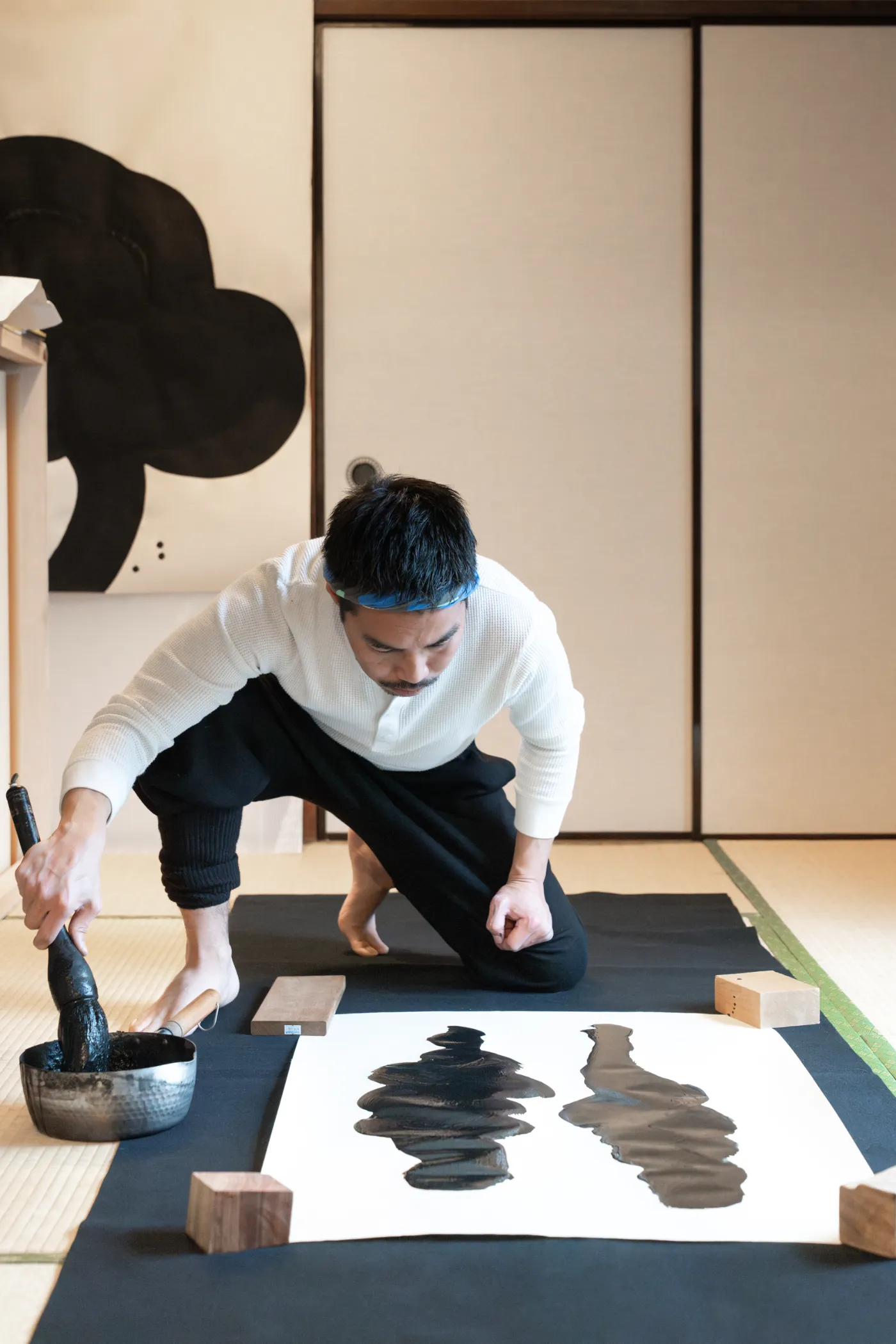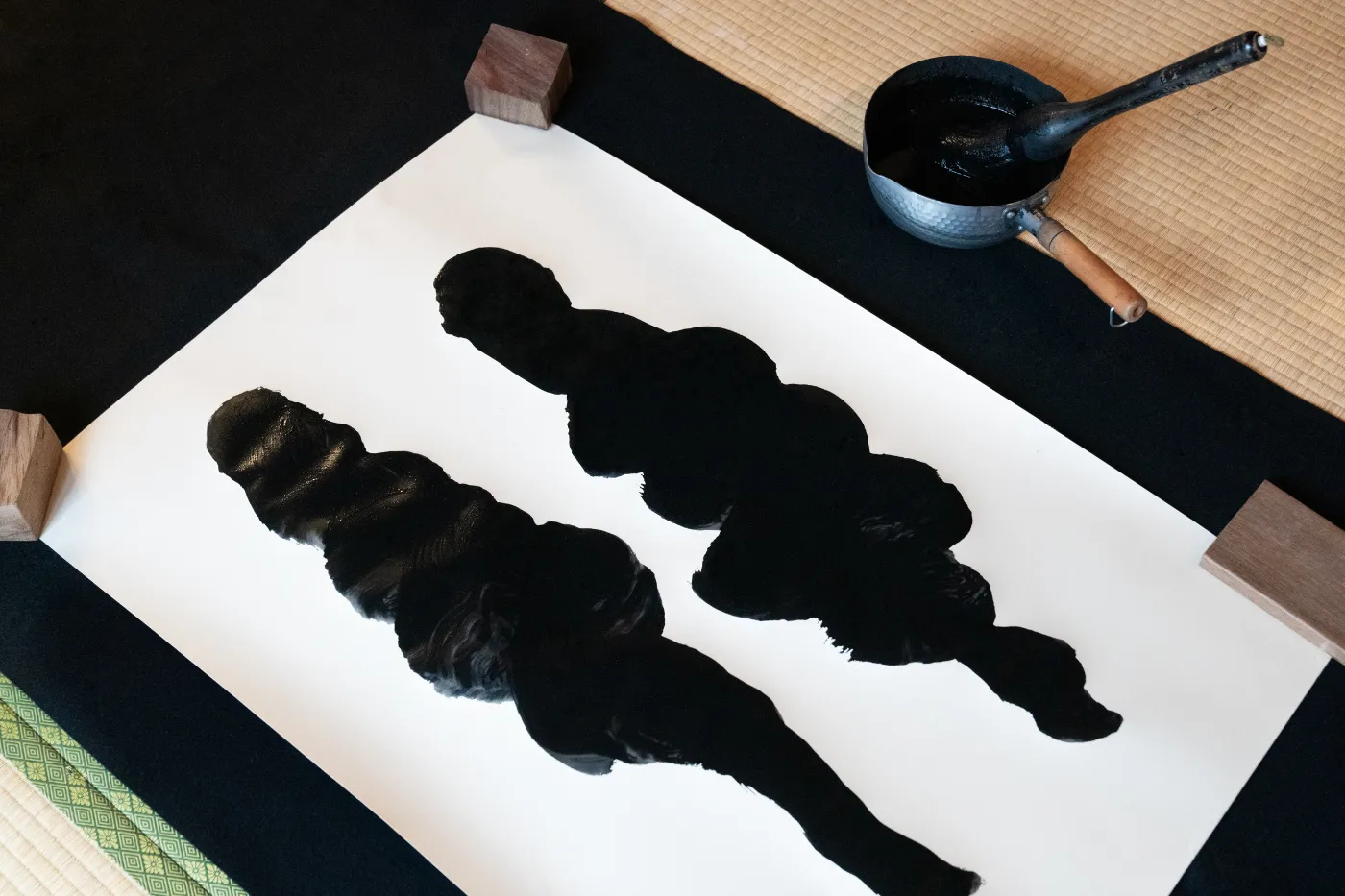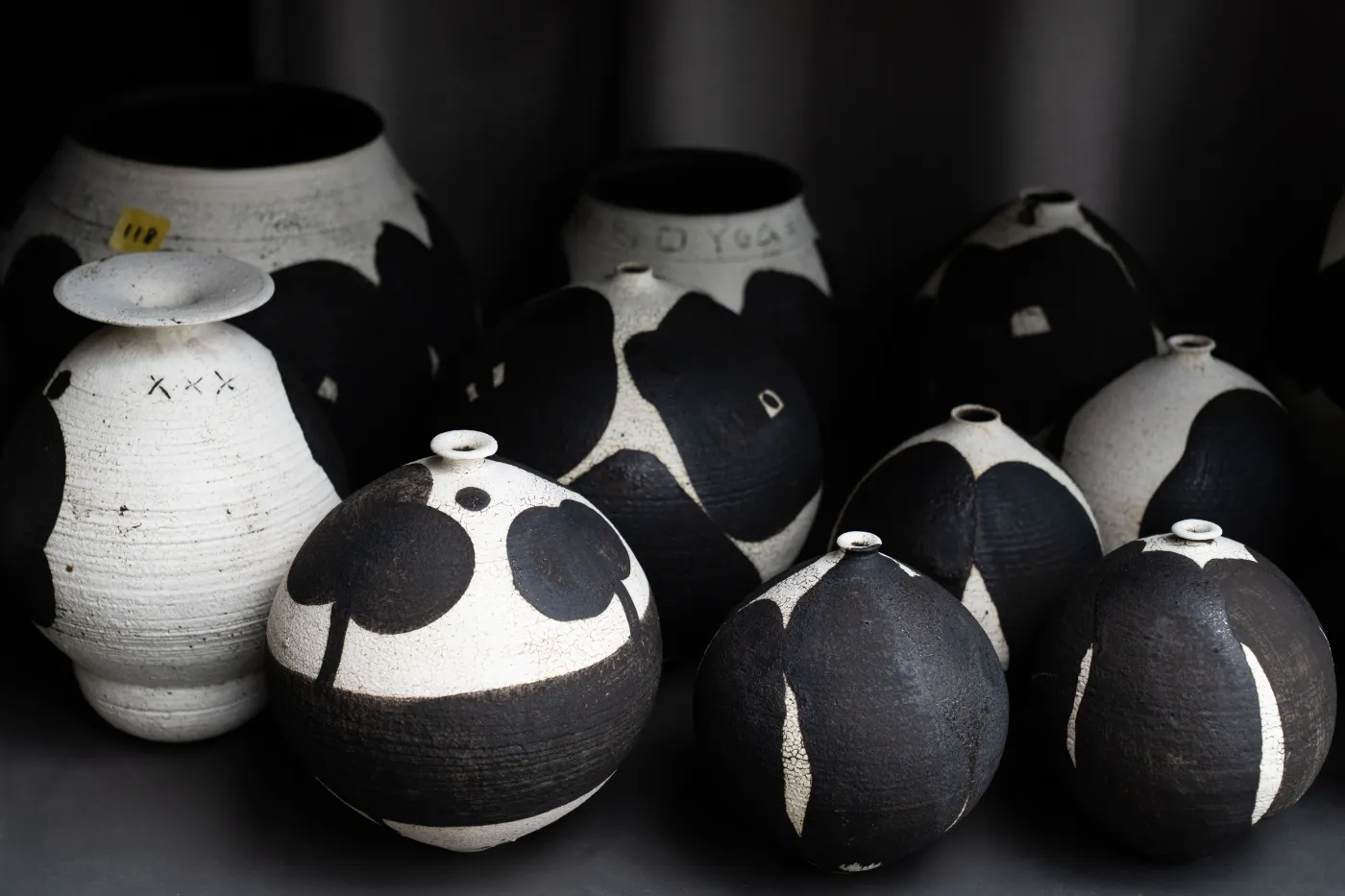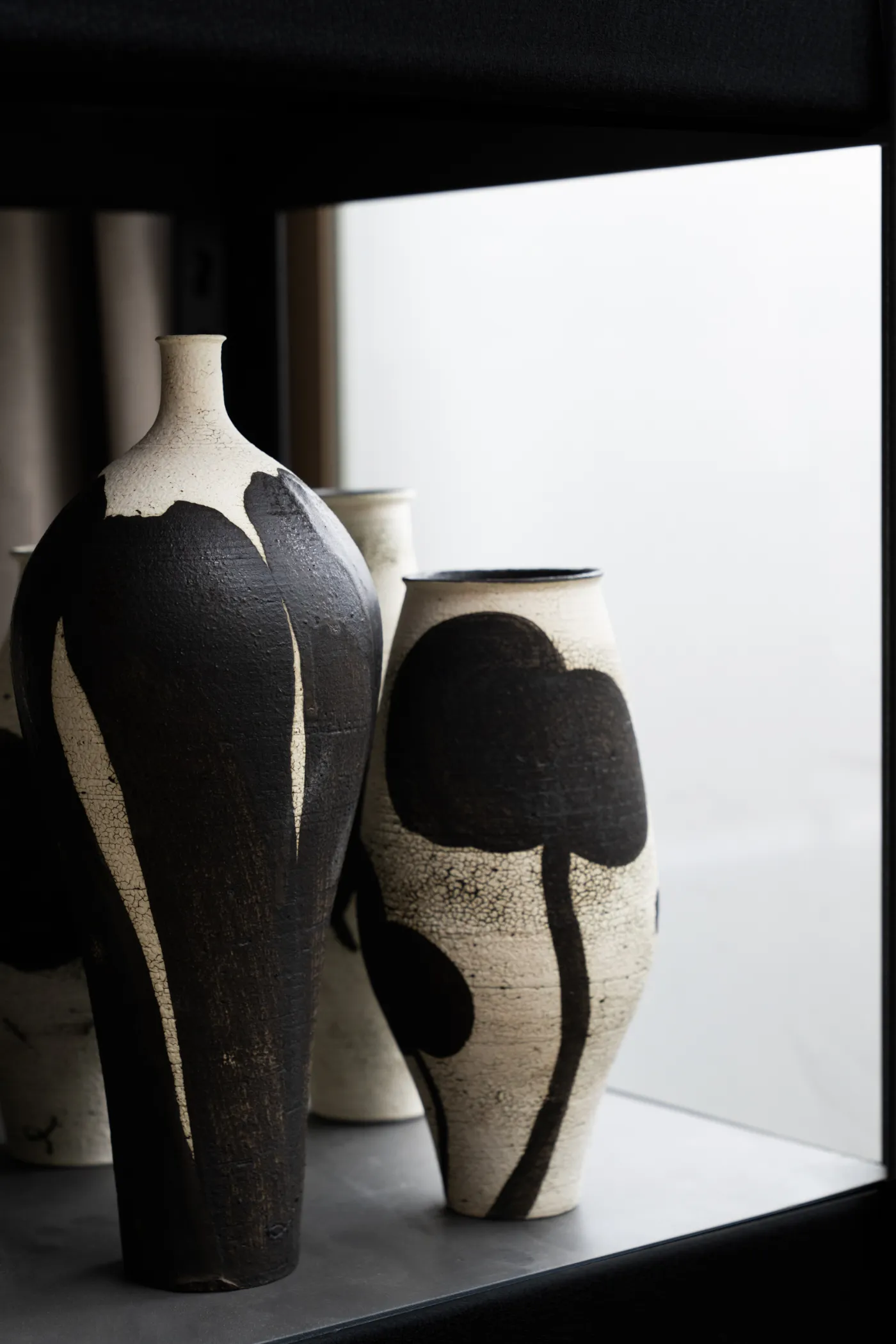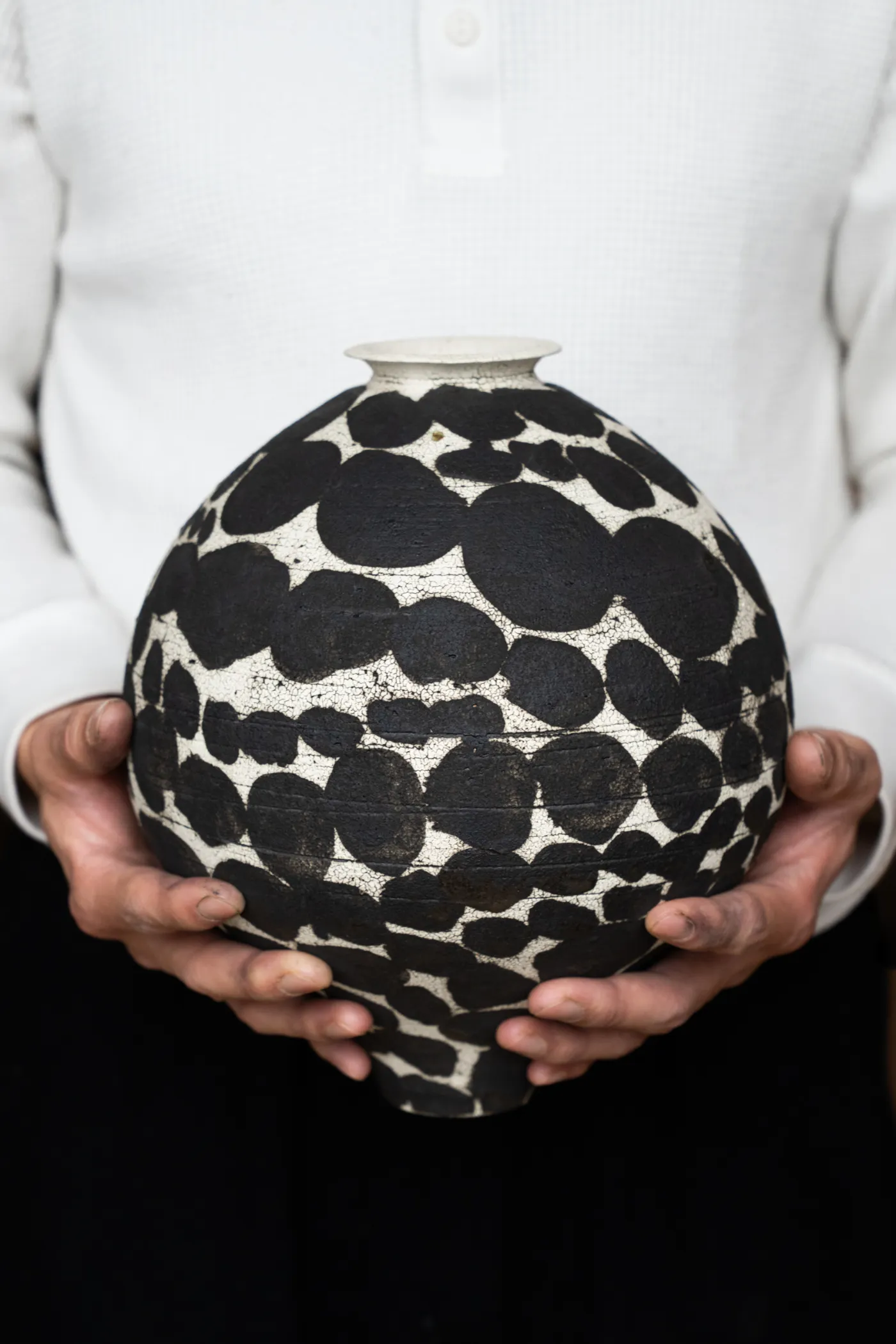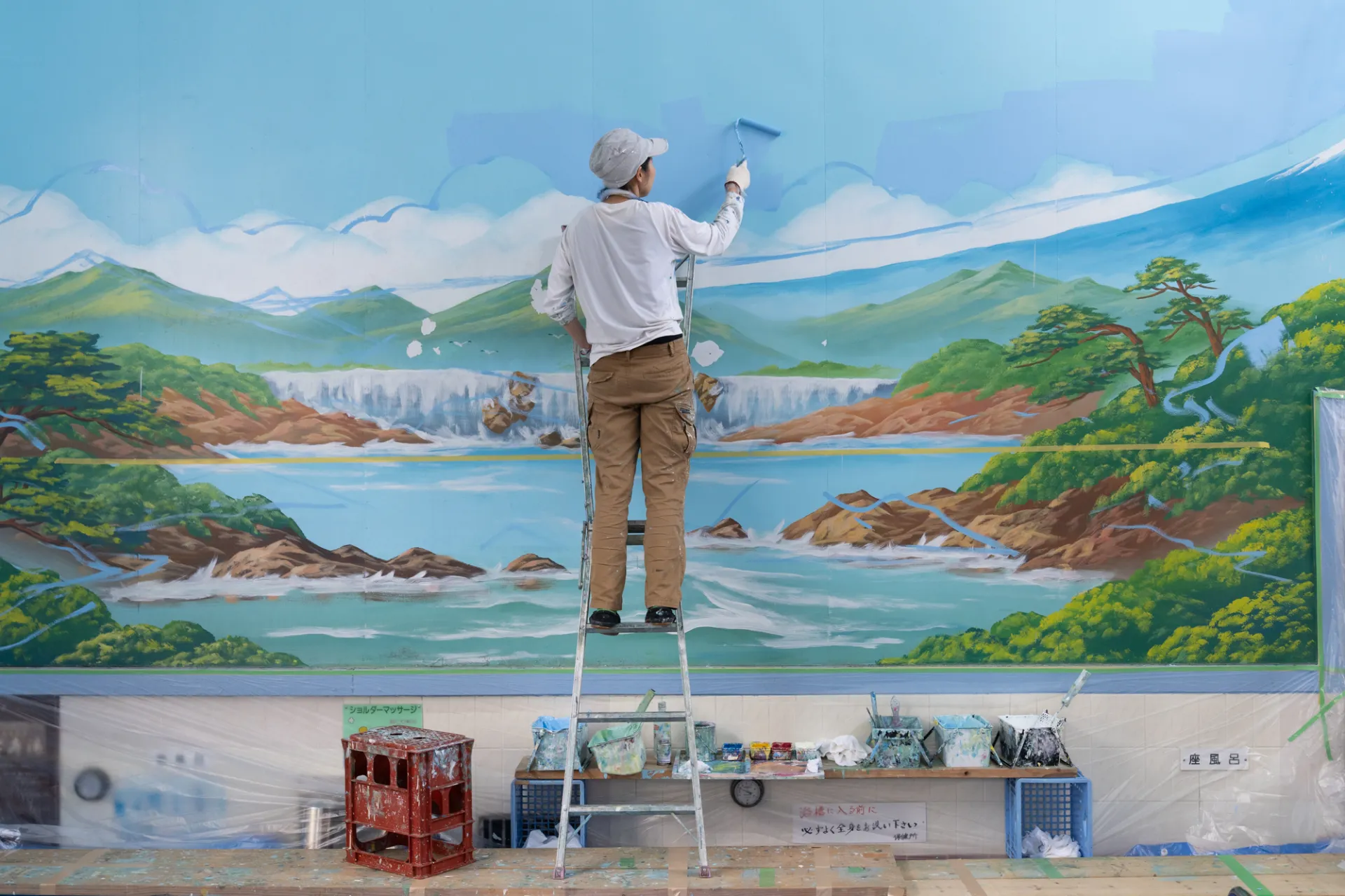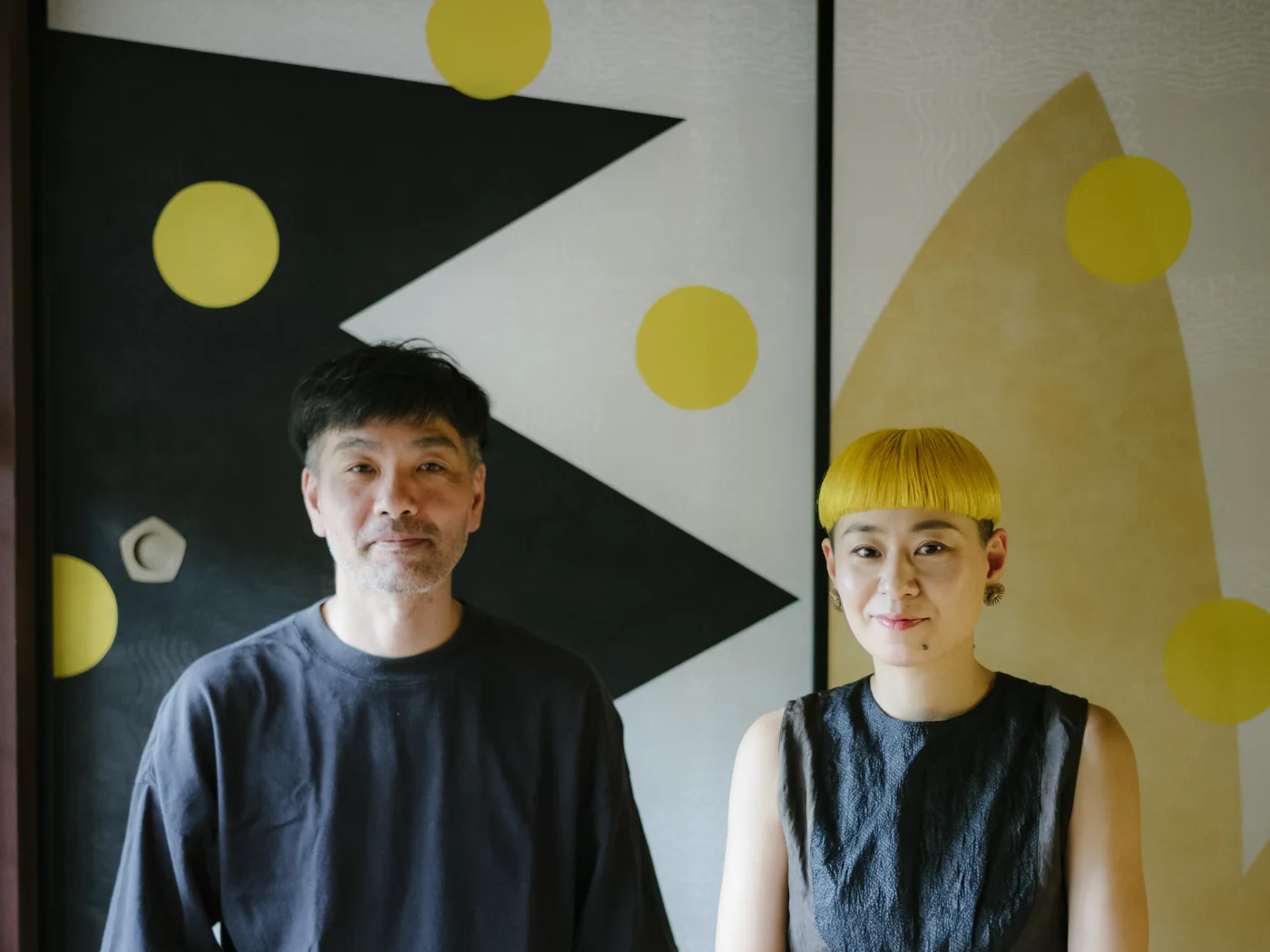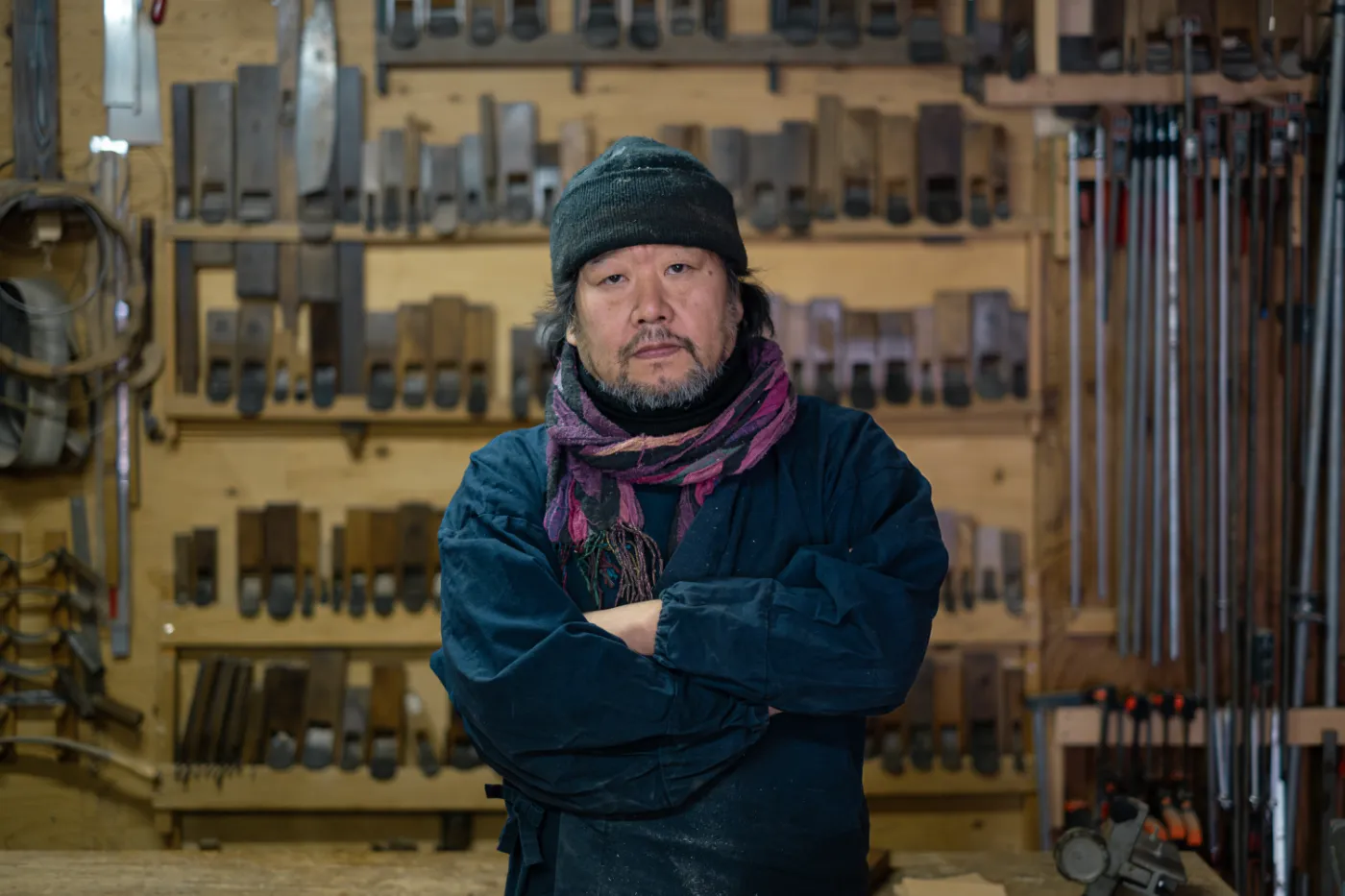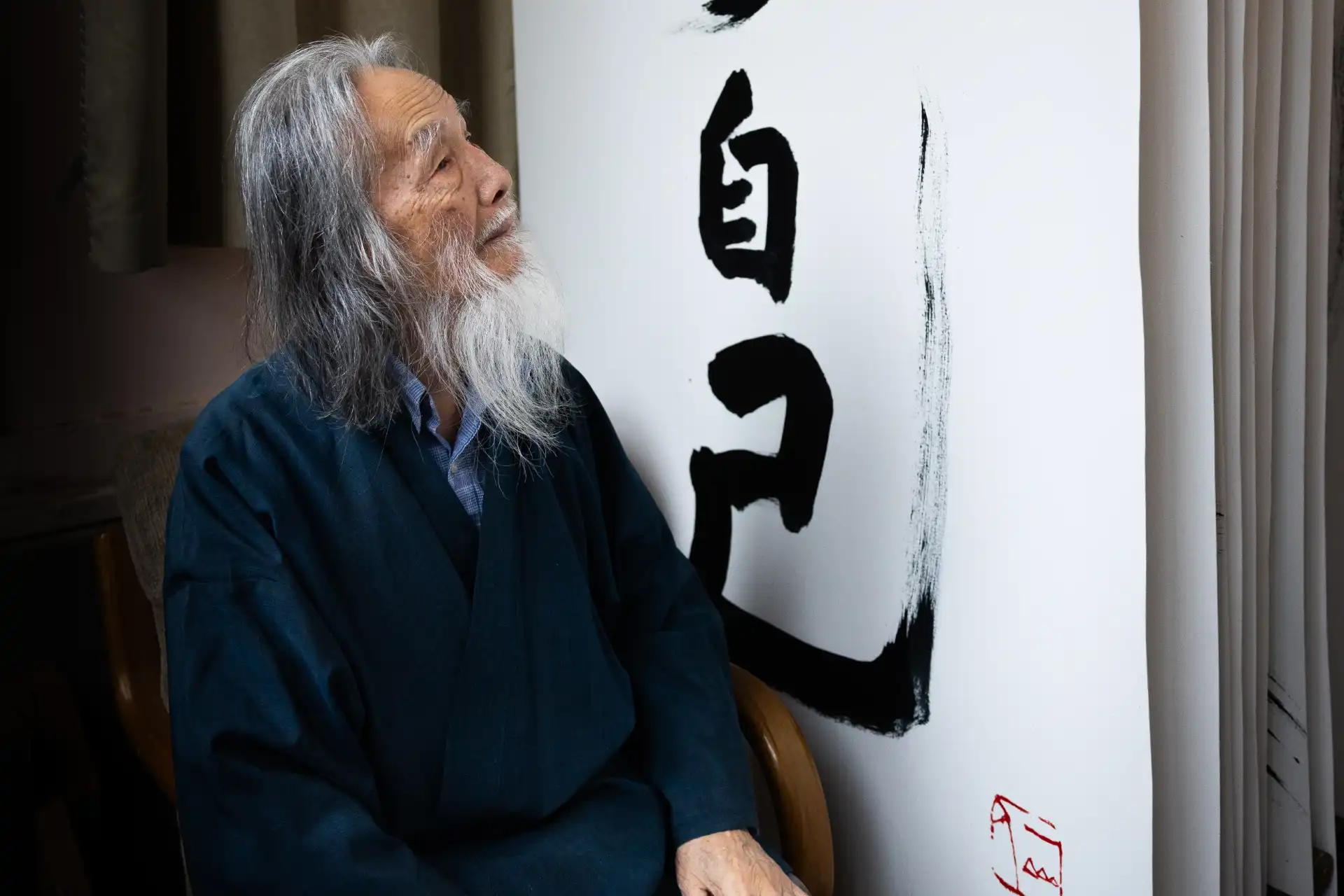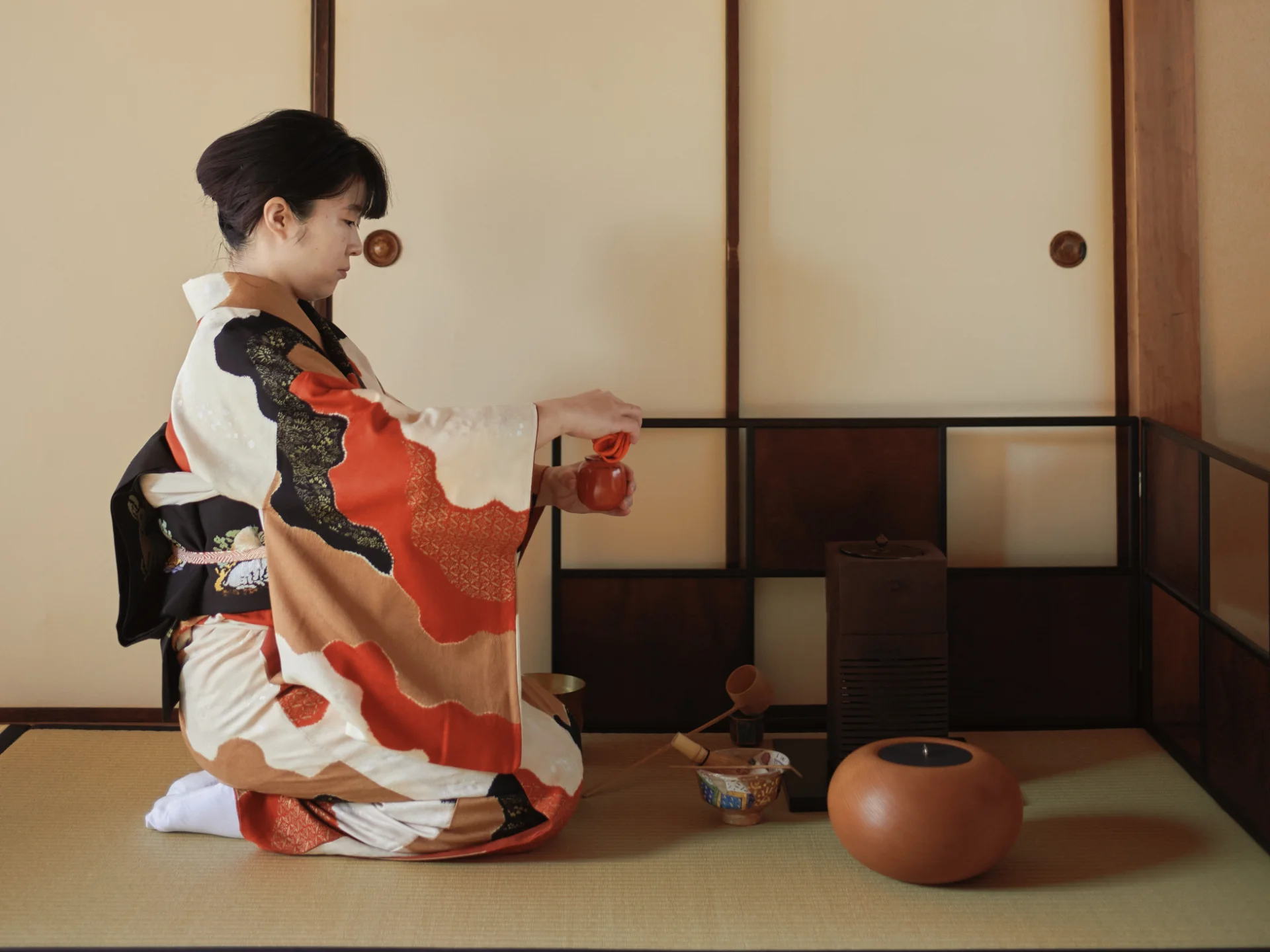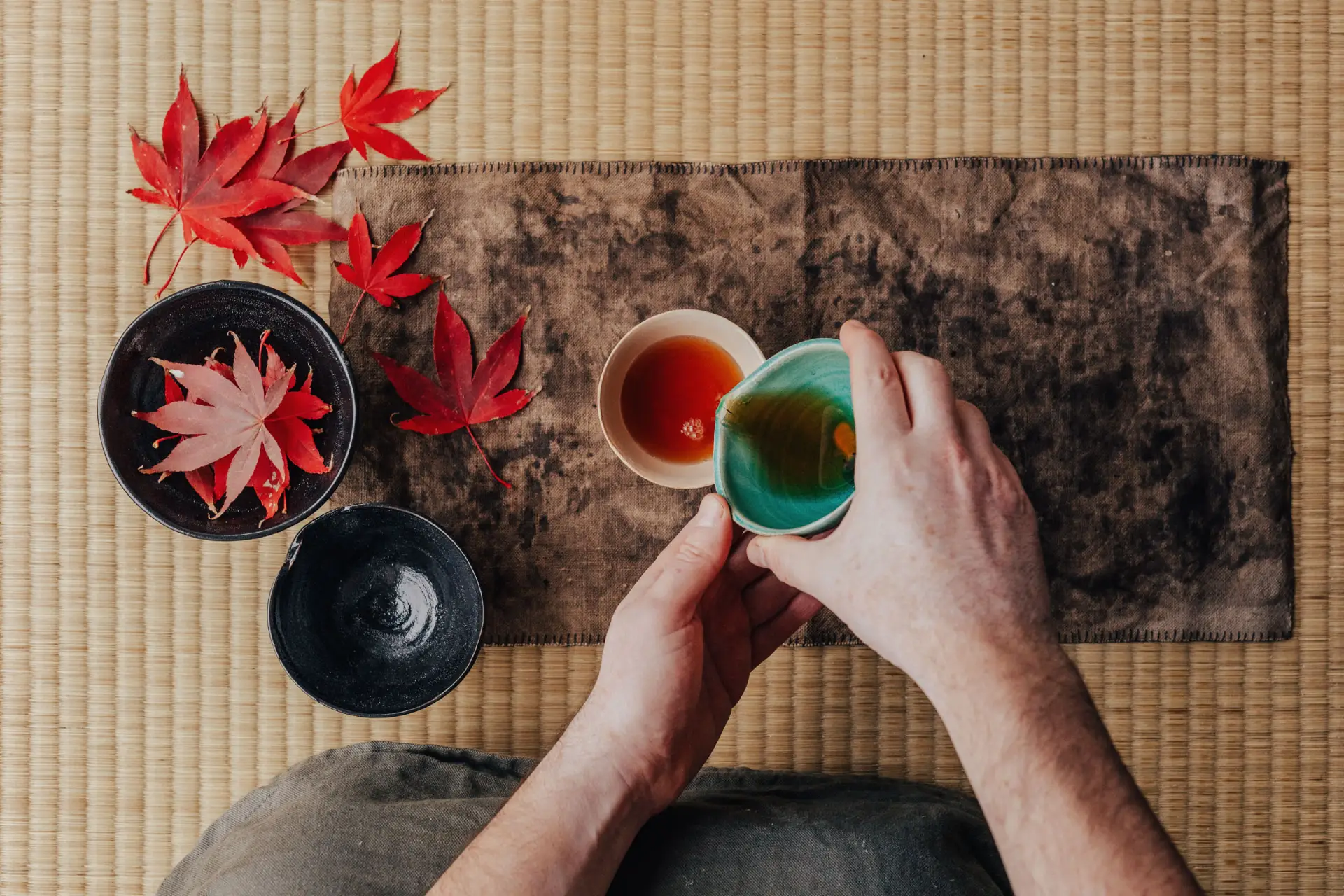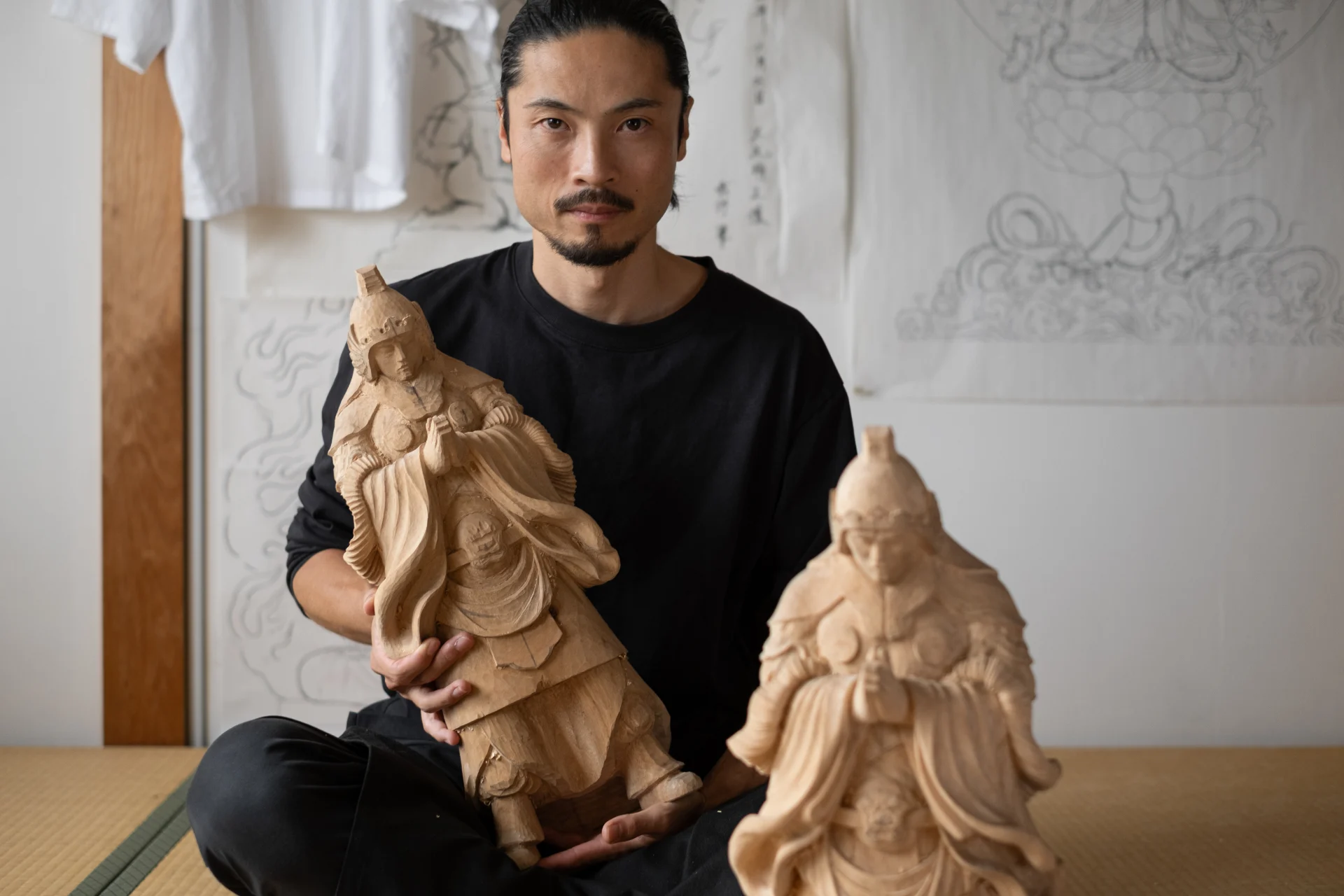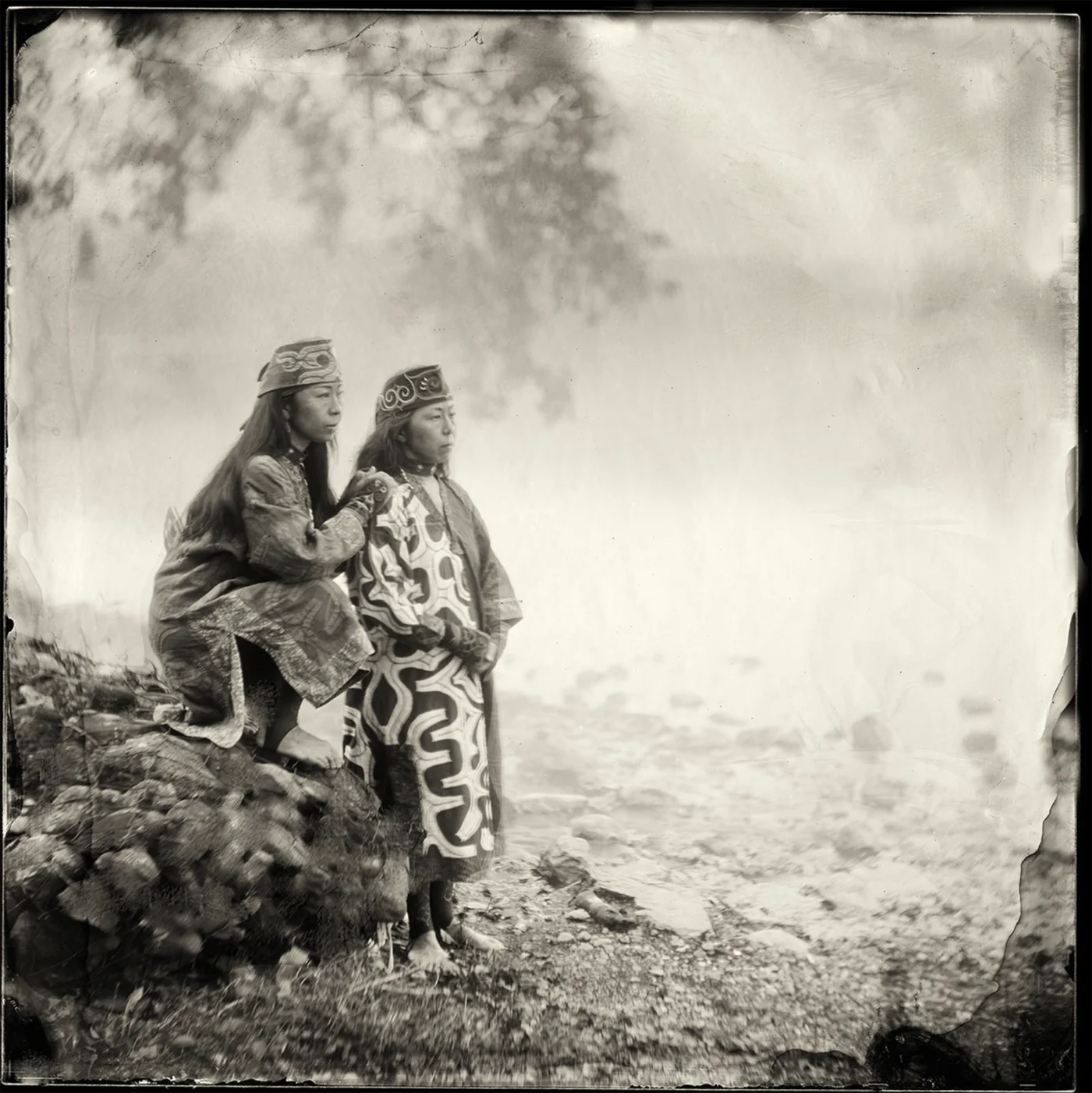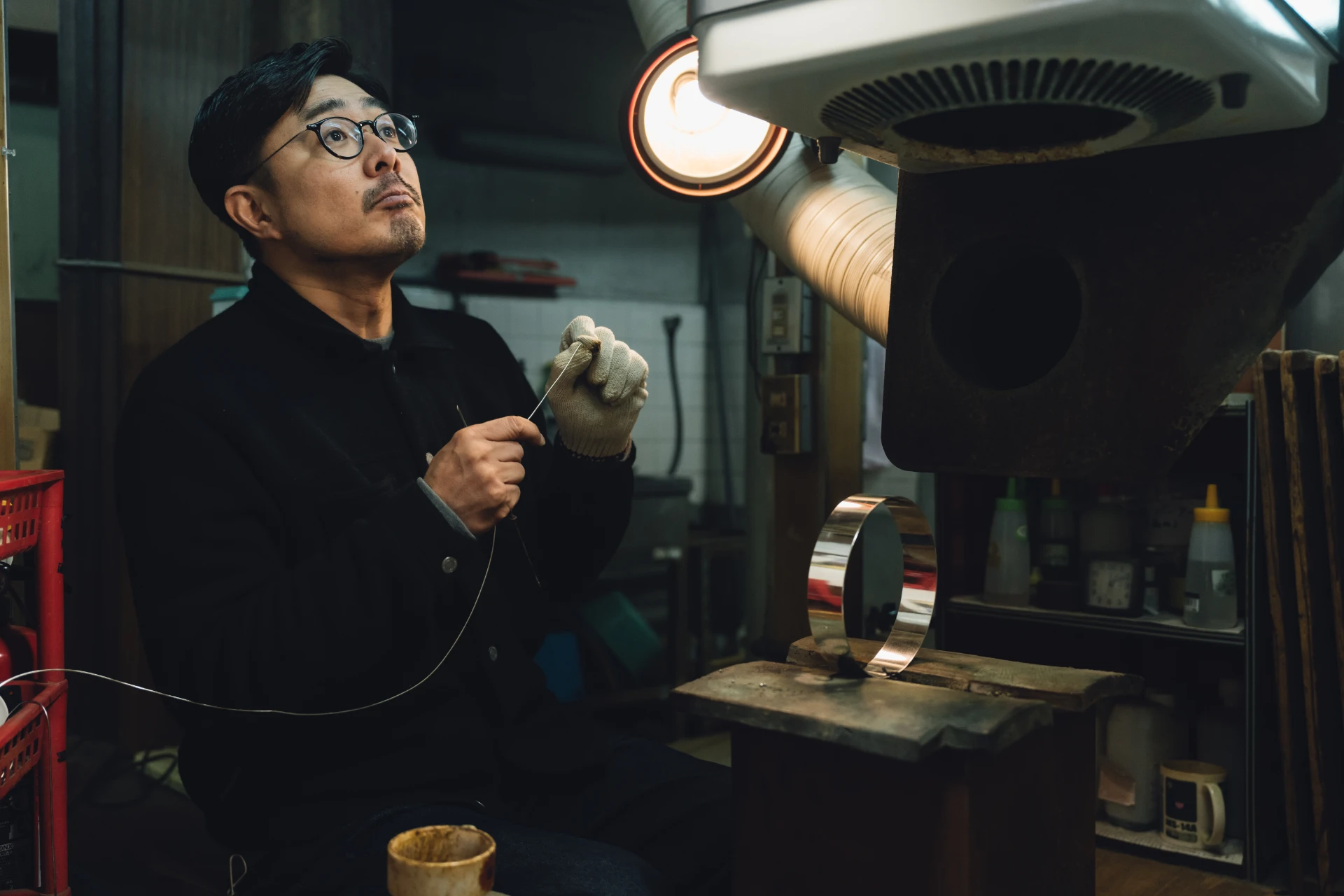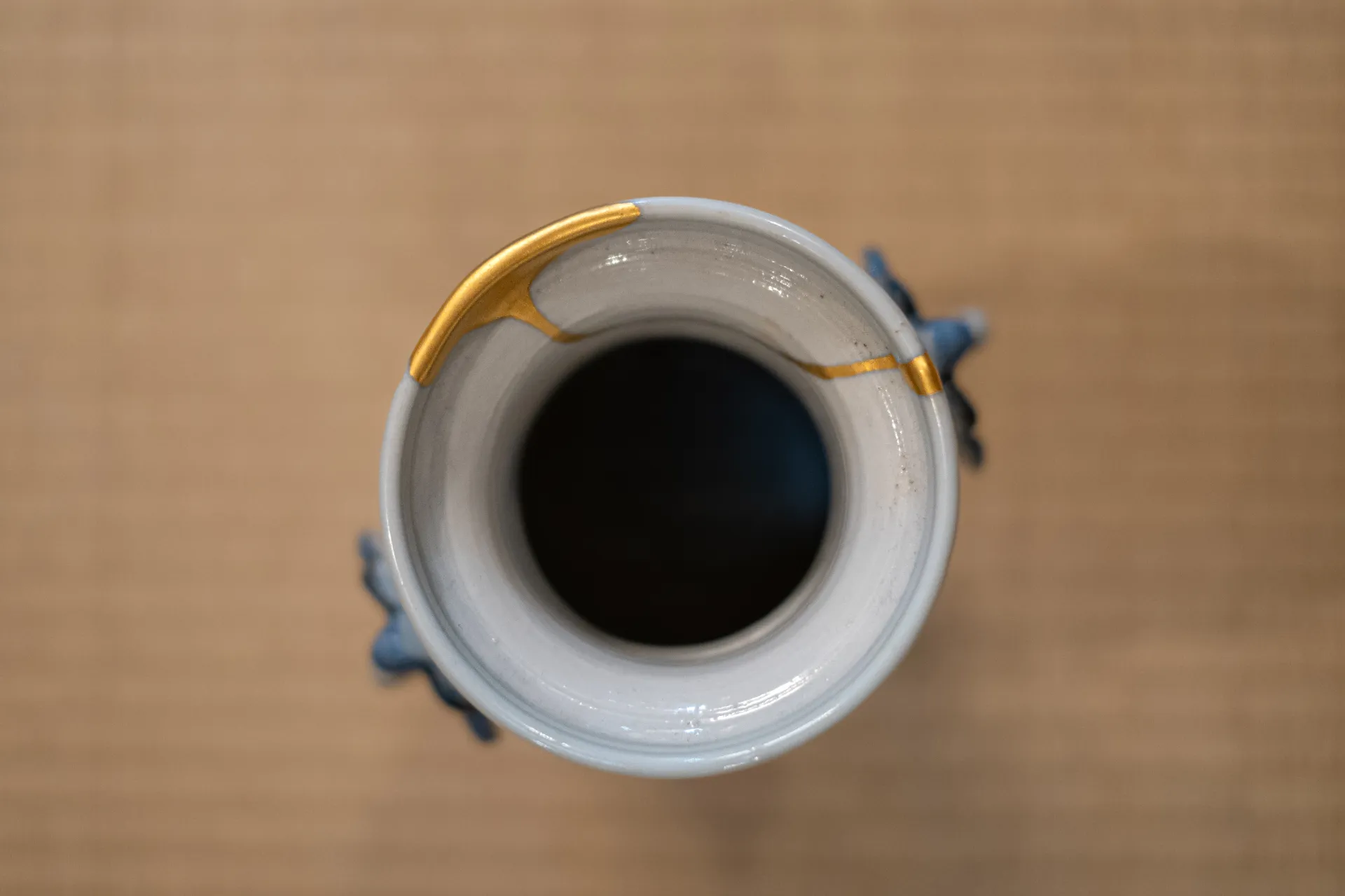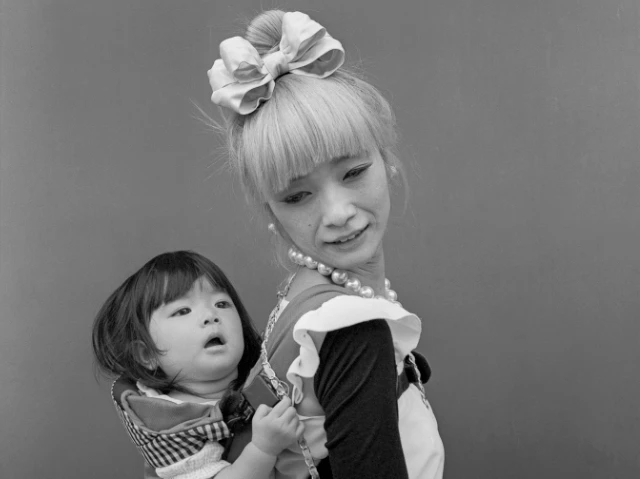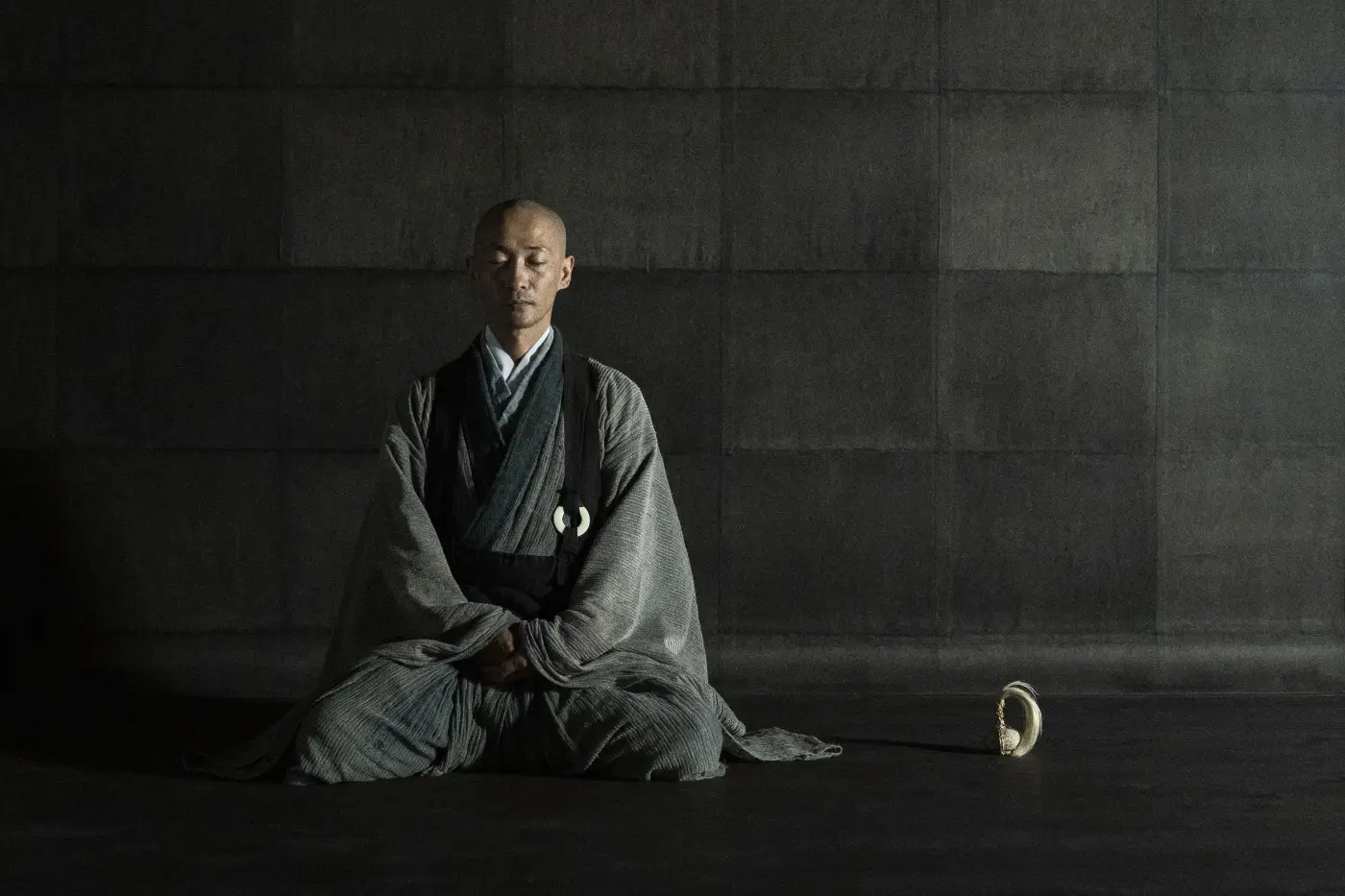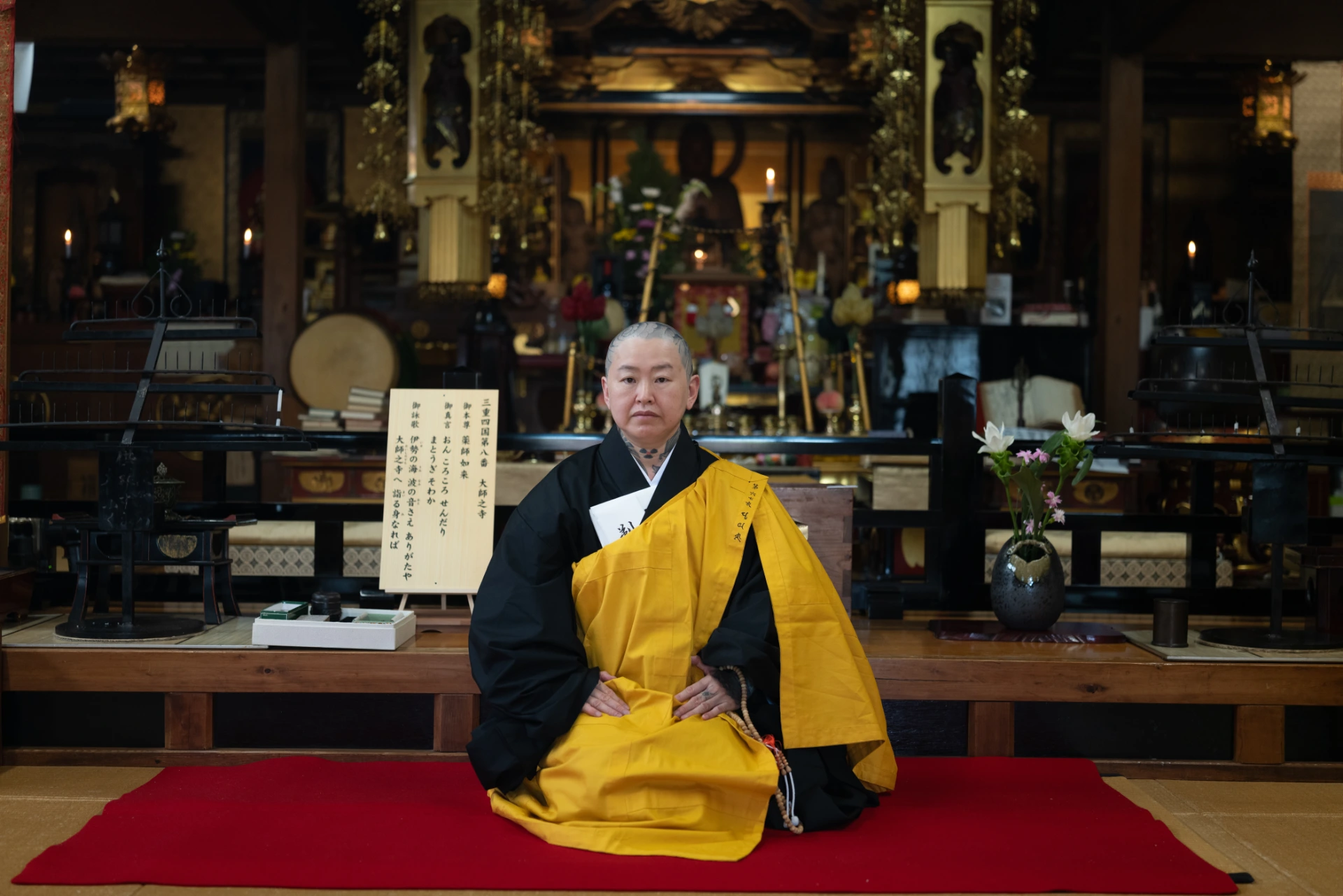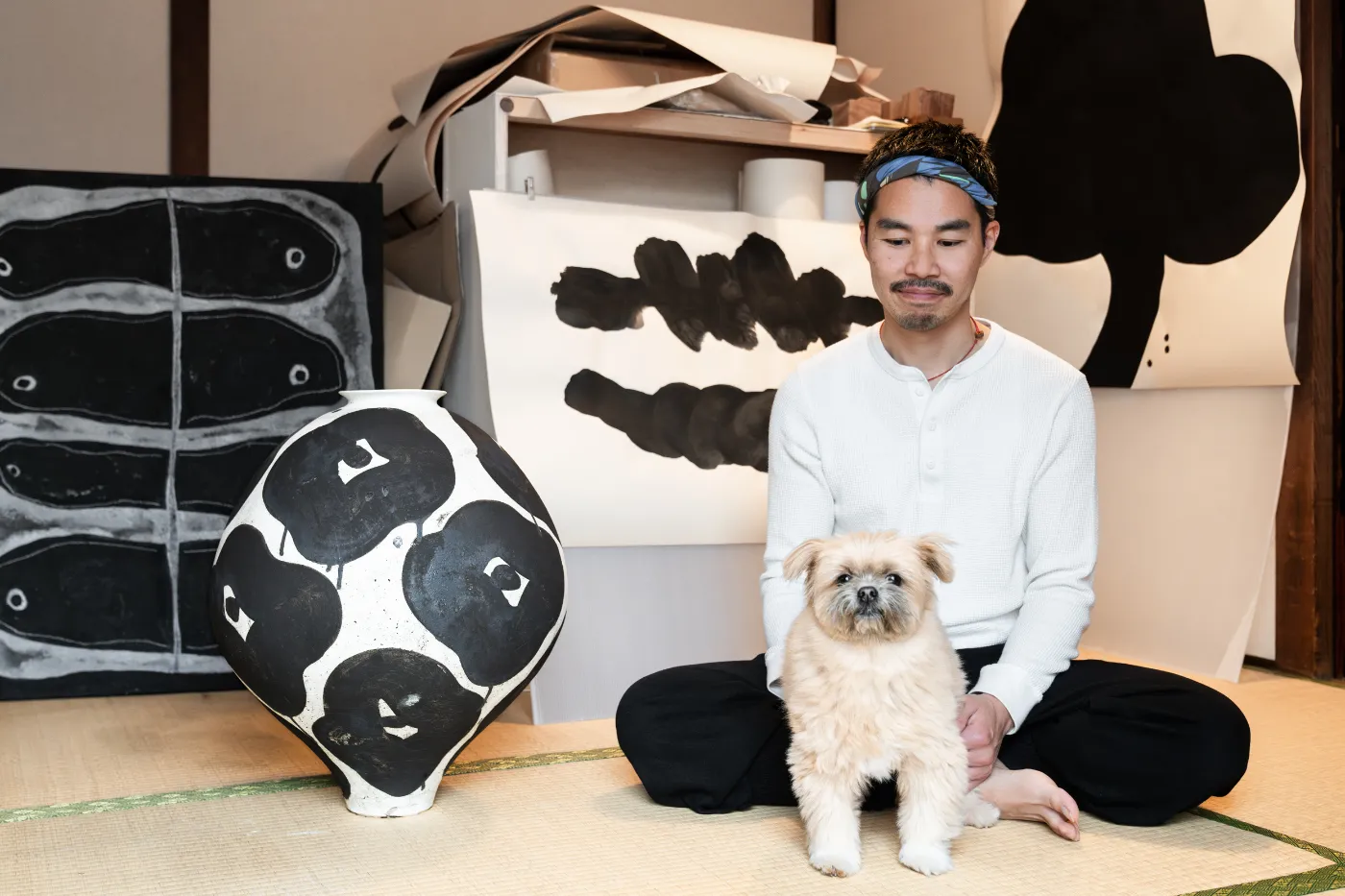
Feeling the Aura of a Work
You seem to have a deep affinity for simple and primitive objects and shapes. Where does that originate from?
Kansai Noguchi: I was born and raised on Shikanoshima island, which is a small fisherman’s town off the coast of Fukuoka in the South of Japan. My parents own a sushi restaurant there. Beach cleanups used to be our regular routine.
My desire to make simple, plain objects might come from the scenery of the island and the objects I found on the beach growing up.
What else informs the work you currently make?
I draw inspiration from different sources, but mainly from ancient cultures. From the simple but sculptural vessels of Jomon Japan, the Korean Yi dynasty, and the Mehrgarh period in Pakistan. The shapes of vessels from those periods and cultures have such dignity.
I’m also influenced by the works of the famous British mid-century potters Lucy Rie and Hans Coper.
When I look at all these works, I think it’s amazing that you feel the aura that the work radiates rather than the form itself.
I would like to create works that have this kind of aura—this sense of quiet but strong presence.
Some people have it, right? I believe it’s the same for art objects. Whether it’s small or big, a piece of art can have an aura. Through their aura, I hope to create works that can play a leading role in a space.
How has your own work evolved over time?
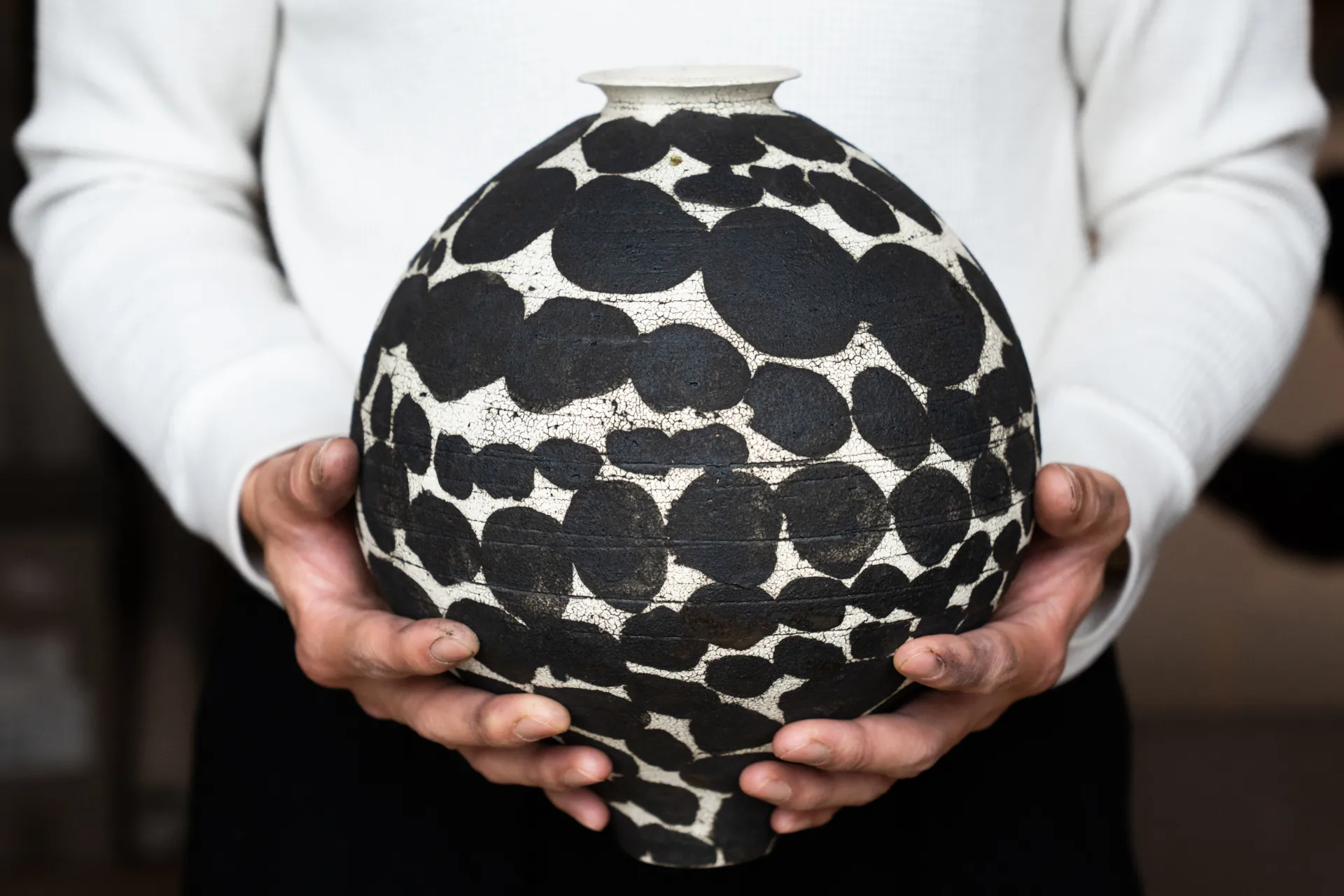
Drawing Circles & Reincarnation
I like shapes that have a sense of tension. So over the course of my creative journey with ceramics, I don’t think the shapes have changed much, but I used to apply various colors to these shapes. I studied and experimented with glazes such as pink and blue.
But at some point, I got tired of the colors. I wanted to make something quieter, so I started making vessels that were all white. And now it’s getting louder again. Creating my black-on-white works that you see here.
What are these circular patterns?
It’s part of the series called Reincarnation. I started drawing these circles about three years ago when I was told my previous dog had little time left on the earth. I started drawing these patterns, hoping that life would continue and be repeated. The pattern is drawn with black glaze.
Before becoming a ceramic artist, you were a professional R&B musician, right?
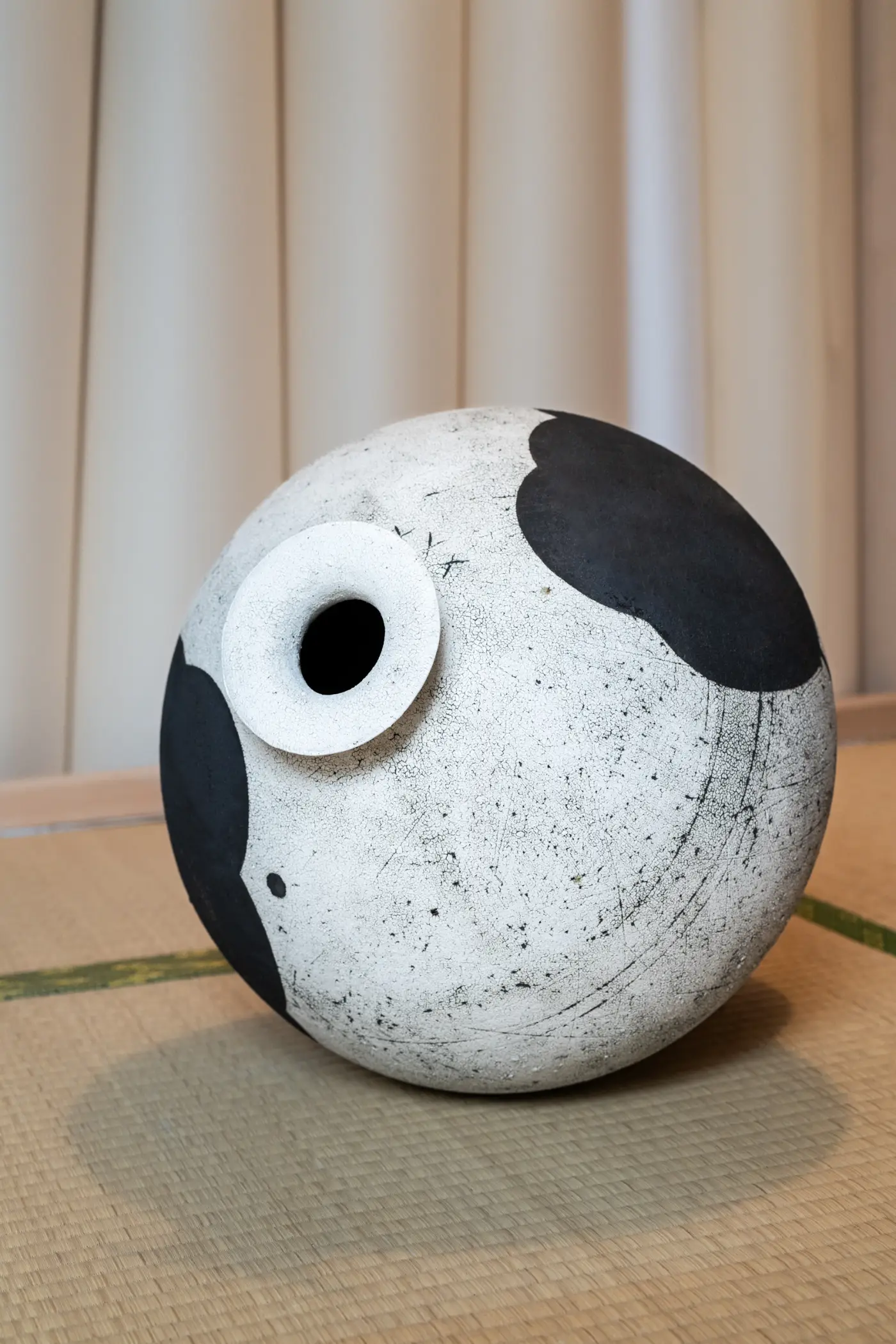
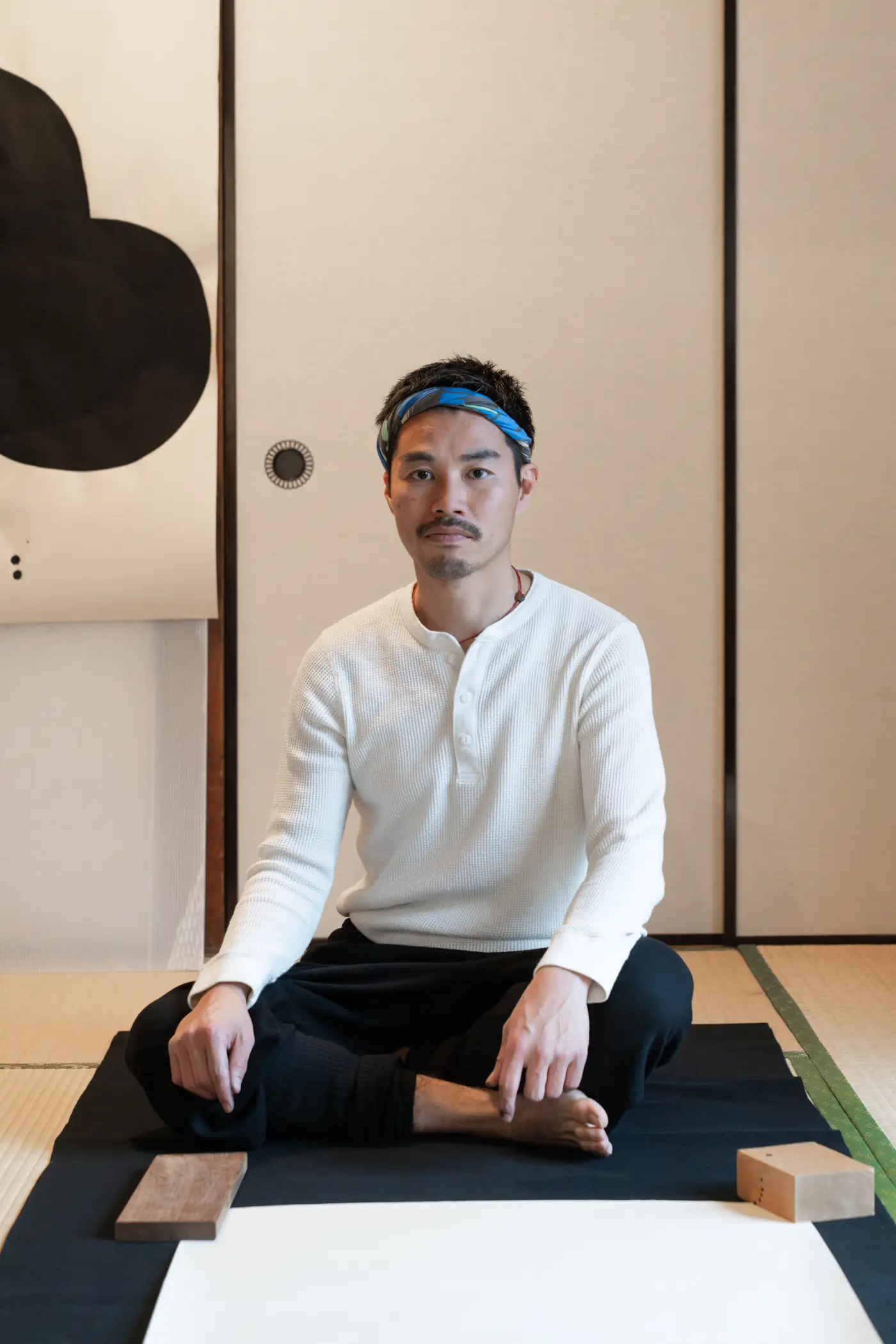
Listening to Your Core
Yes, I was signed to a music agency. Everyone said I was so lucky and doing well. But on the inside, it didn’t feel like that at all. My 20s and 30s were full of pain and suffering.
We were a band of four, and we all lived in the same house in Tokyo. We had to make 12 songs a week. For three years, I wrote 300 songs.
I lived in Tokyo, but I didn’t go out. Even my music wasn’t for me to perform on stage; it was for other idols and performers. It was completely different from my ideal life. It was so painful that I cried in the bathtub every night.
When I was 30, I moved to another agency. But even there, I didn’t get to perform on stage as an artist. I worked as a composer but couldn’t give up on becoming an artist.
So, I decided to go to the U.S. to study music, but once I arrived there, I gave up right away. Actually, I had already given up on the idea before I went to the United States. It feels like I went there to find a reason to quit. I knew it in my core then.
But what I gained from going to the U.S. was a different perspective. I could see things the other way around. I could look at Japan from overseas.
Up to that point, I had only longed for foreign cultures. But in the U.S. for the first time I thought I was glad to be born in Japan.
Could you say more?
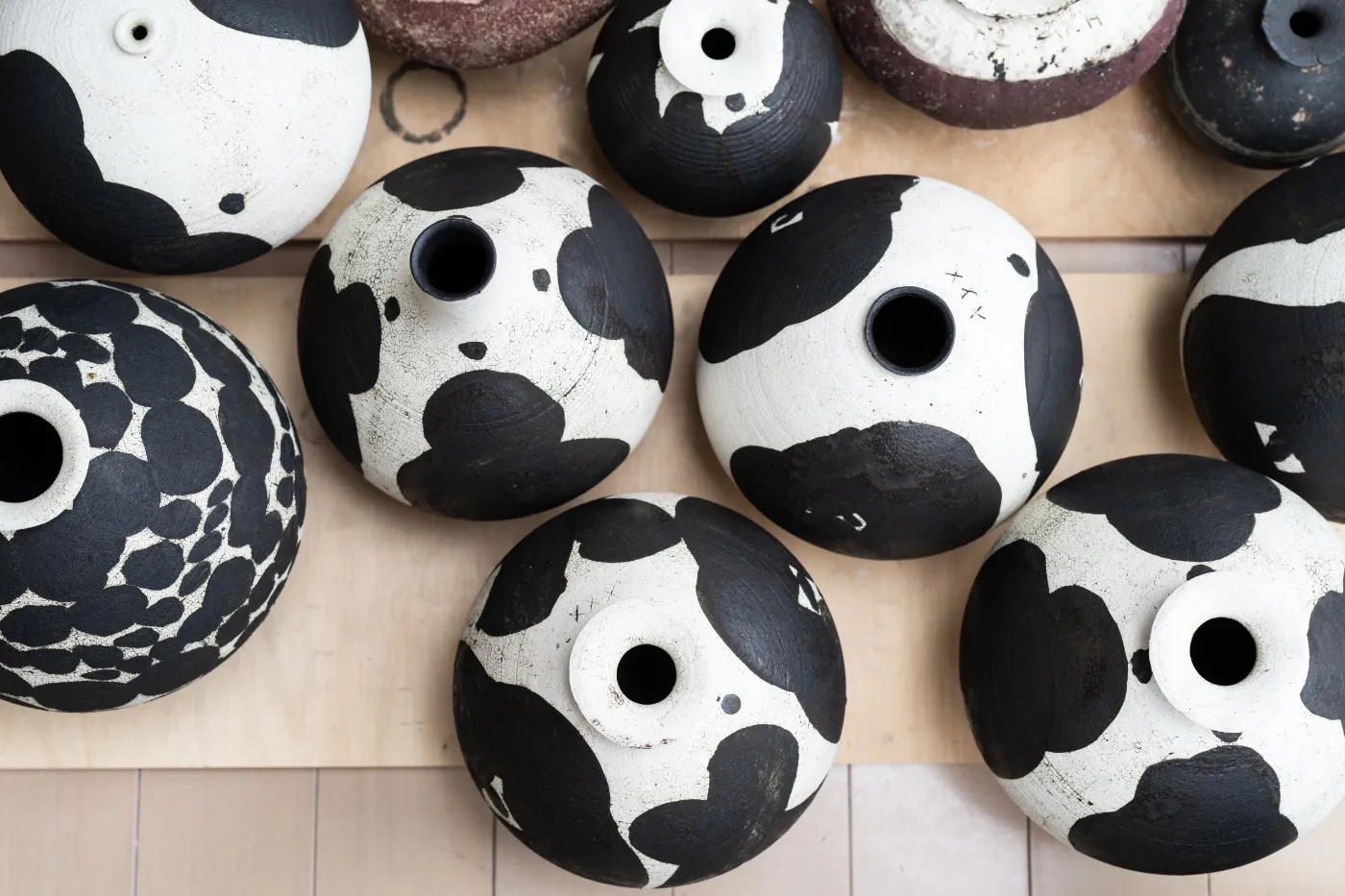
Letting Go of Everything
Being in the U.S. sparked my interest in art and craft. A friend took me to a museum, which was a world I never knew existed. That was the turning point.
I encountered the works of the sculptor Isamu Noguchi, an American of Japanese descent. I was deeply inspired by the fact that a Japanese person could accomplish such an amazing thing.
Before that, I’d only been into music. And the music, especially R&B and Jazz, just was not for Japan to compete at the international level. But in the world of arts and crafts, Japan can make it. I could make it.
When you left Japan for the US, you threw away everything you possessed related to music. Was it easy to let go?
At the time, I wasn’t the type of person who could easily let go. But yes, I did throw away everything, from records and song-making equipment to the piano.
I’d been aspiring to be a musician since I was young, and I’d been doing it for more than 10 years. I knew that was holding me back. I couldn’t easily quit because of the money I spent during that period or the effort I had put in. It felt like they would all go to waste.
But in my core, I knew I had to let all that go. If I went back to zero by letting go of everything, I thought I could discover if I was really made for music.
It was a challenge, though. But it was well worth the risk.
When I was able to let go of everything, so much came back. The greater the risk, the more will return. I’m not scared of letting go of things now.
Do you enjoy the work now?
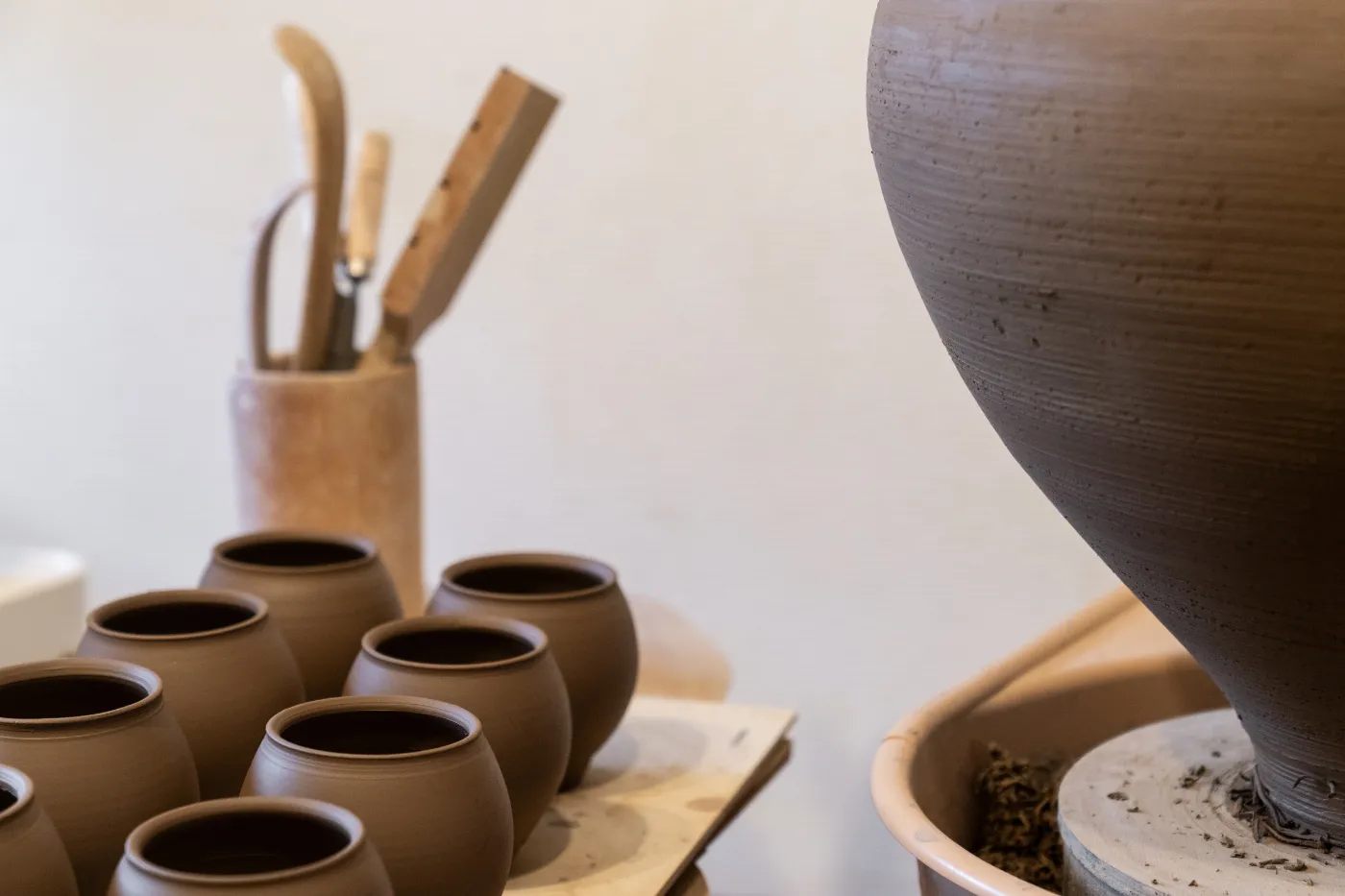
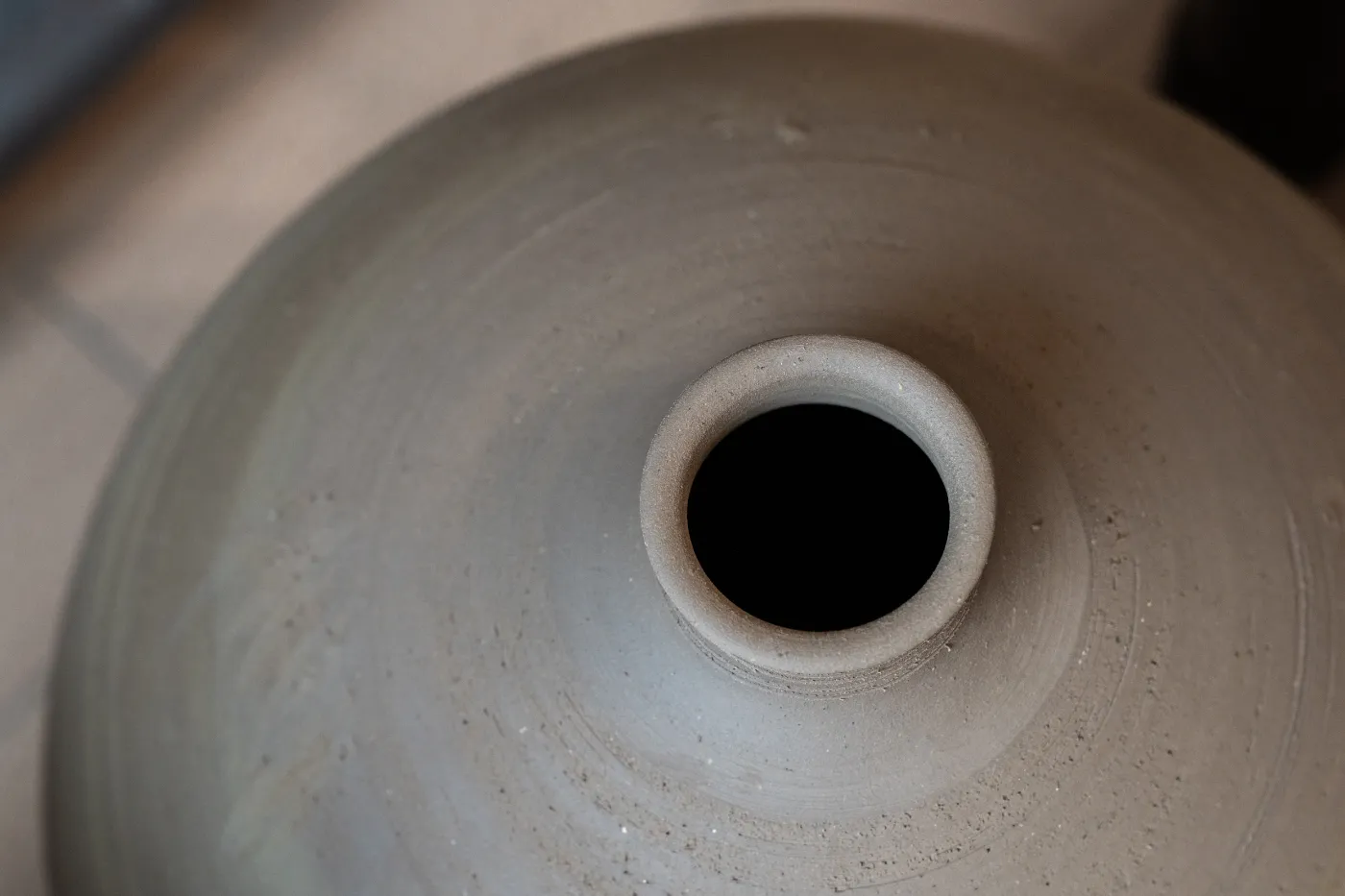
New Originals
Yes, it isn’t painful. It’s fun… or rather, it doesn’t feel like I’m straining myself.
If you don’t mind pushing hard to work, it’s safe to assume the work is suited for you.
I’ve been at it for ten years now. At first, I wanted to do many things, but I’ve tried most of them by now. So now I’m constantly pushing my creativity out, every time I start from zero.
You have said before that you feel like the world has run out of originals. What do you mean by that?
Yes, I still think that’s true.
We’ve exhausted the originals. It’s not just about crafts and arts, it’s something I’ve been thinking about since I was doing music and applies to many domains. The continuous question in me is how to break through that.
I think by combining something with something else, we can create a new original.
In my case, I draw on the classic forms of Korea and Japan that embody such dignity, and I would also include elements of simple, plain things from other countries. Then I make something which you can’t really tell what nationality the artist is.
That’s the kind of work Isamu Noguchi made, too.
I want to make work which you can’t tell who made it. A new original that draws on the past but has universal appeal.
I also see paintings and ink drawings in your studio. Will those go to the exhibition?
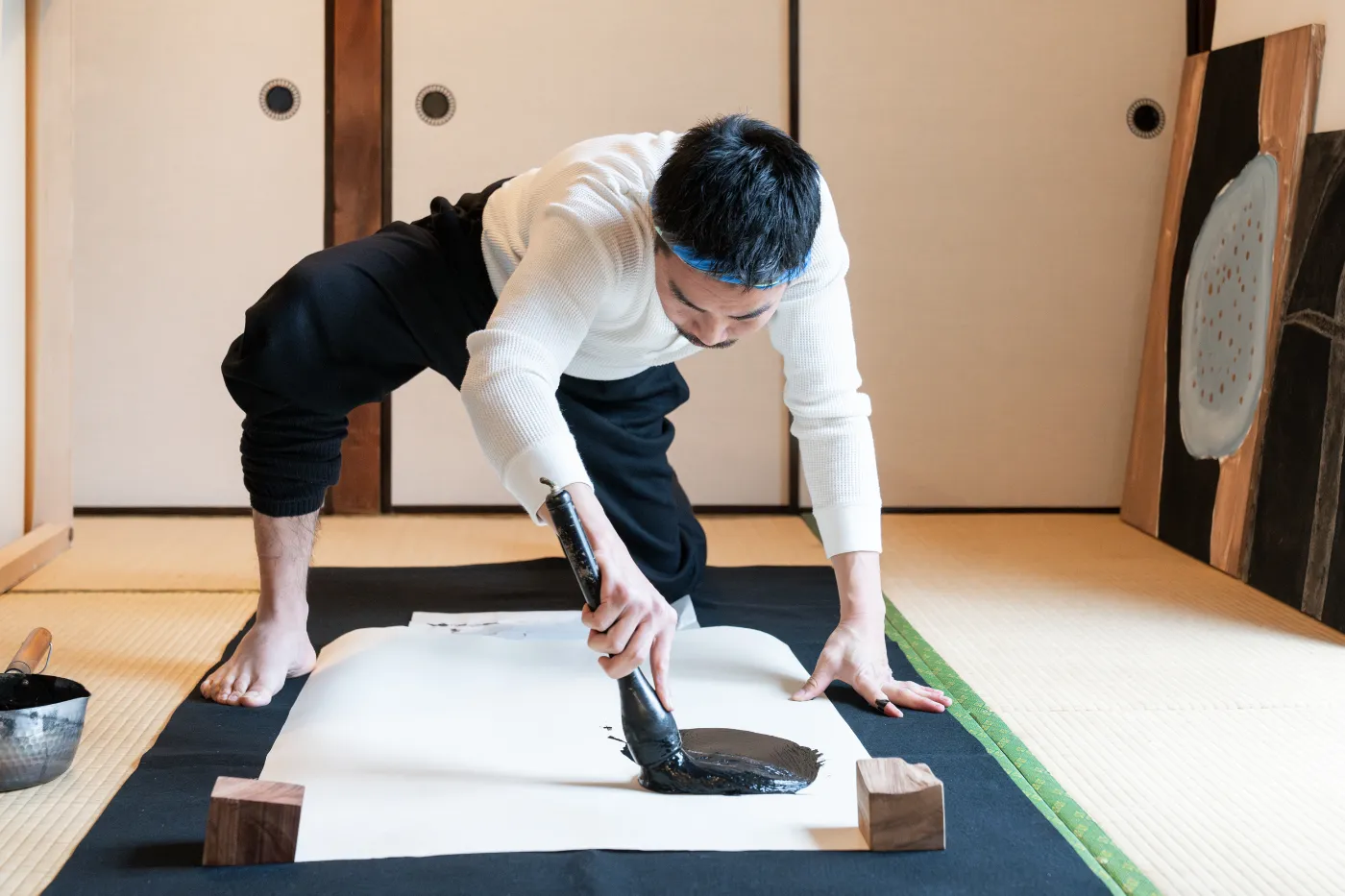
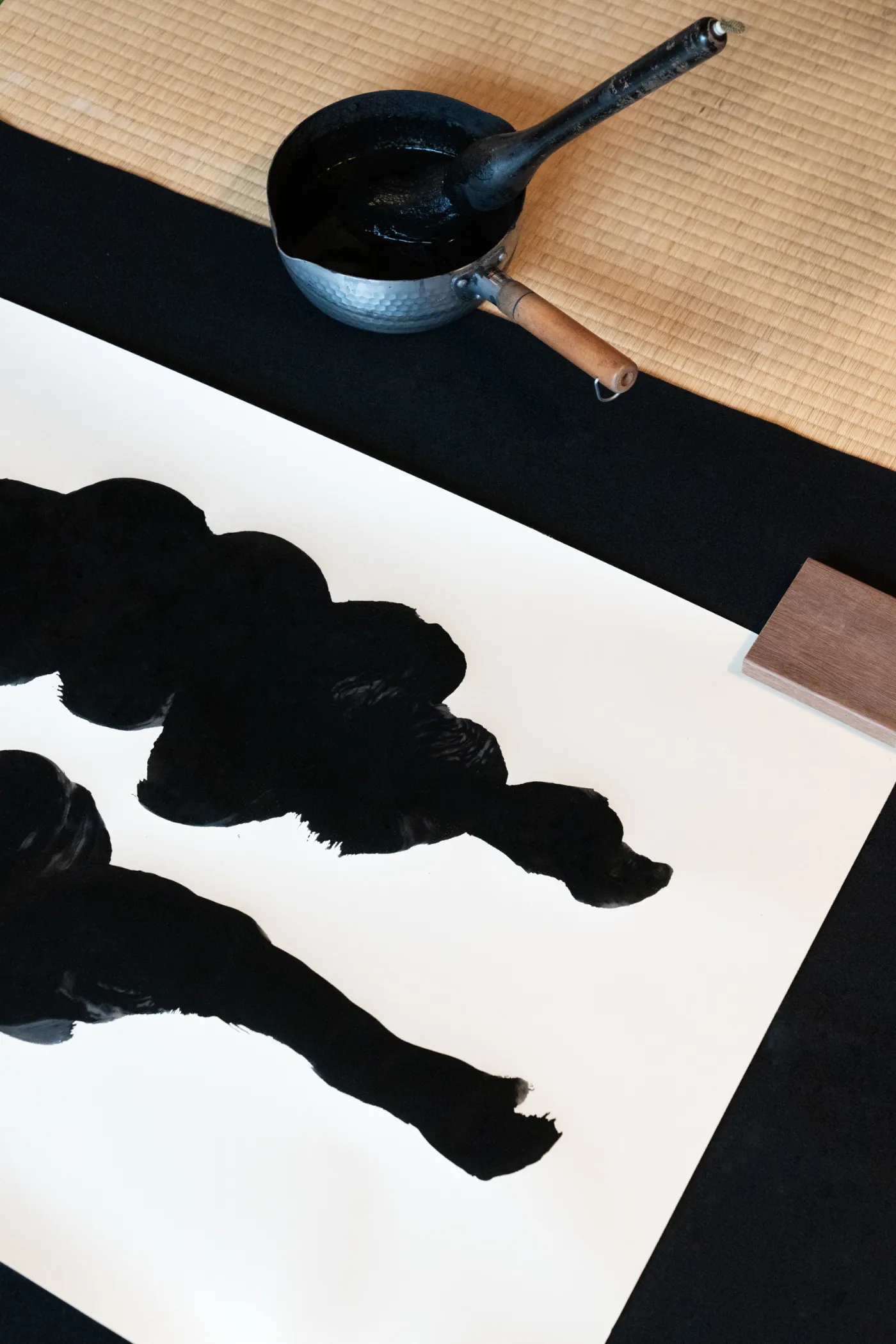
Change is Exciting
That’s right. I started drawing as a hobby, but this time I thought I would give it a try and submit it to the art fair.
I was making ink right now. I use glue, which is the extract from deer skin. It’s like a gelatinous substance that comes out of the skin. In the old days, there was no bond or glue. So this is what they used. I joined the deer hunting the other day to witness the entire process.
Then soot is mixed in there. The soot comes from a friend’s wood-fired kiln. Together, it makes the deep black ink I use for my drawing. It is drawn with materials from the mountains and ceramics. It’s the same with my paintings.
You express yourself fluidly in various ways. How do you describe your profession?
It doesn’t matter. I don’t have to decide. About 80% of my works are pottery, so right now I guess I’m primarily a potter.
But there may come a time when you get tired of it?
Possibly. But I’m looking forward to that. What will happen?
I’ve seen myself change before. So it’s exciting!
